Zurich Classic of New Orleans
TPC Louisiana
Golf Digest Logo Equipment

Golf equipment truths: Why you should rethink your driver loft
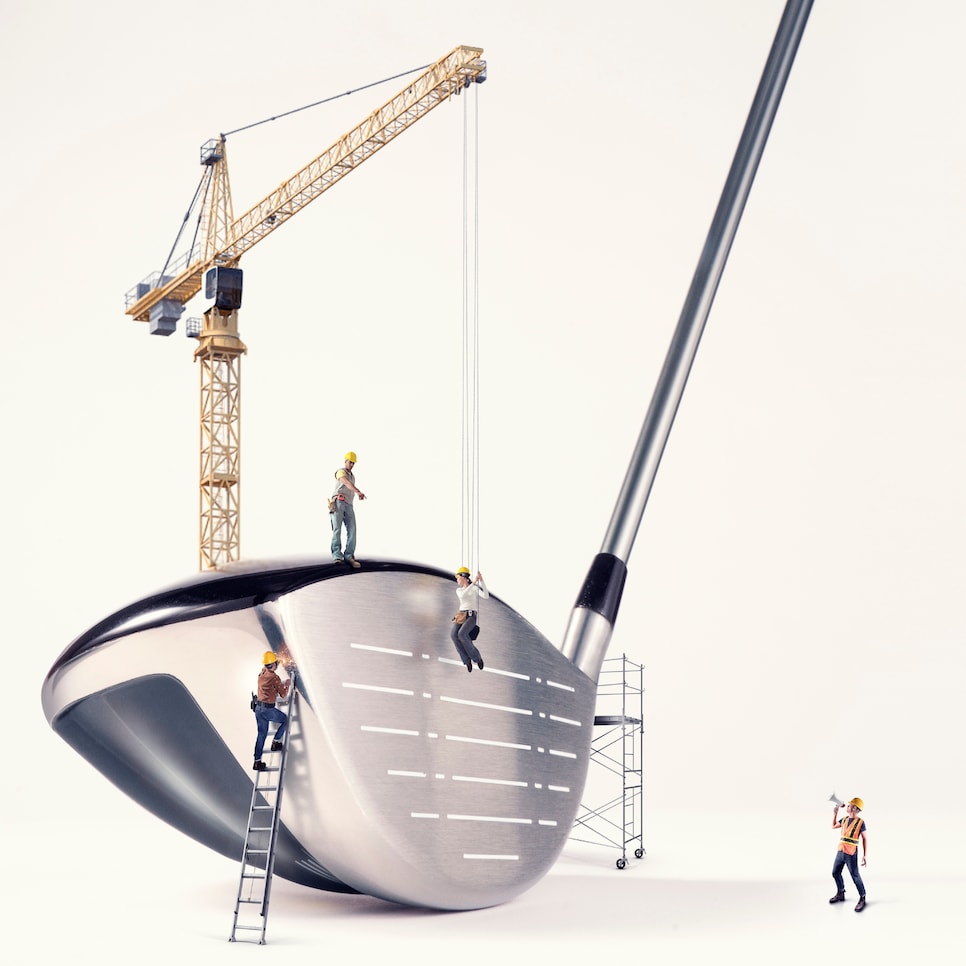
Jin-Young Ko, the No. 1-ranked player on the LPGA Tour, swings the driver nearly 30 miles per hour slower than Brooks Koepka, the No. 1 male player in the world. Yet Ko uses a driver with 9 degrees of loft—1.5 degrees less than Koepka. What gives? Aren’t golfers with slower swing speeds supposed to use drivers with more loft?
That’s not necessarily the case anymore.
Sixteen years ago, Golf Digest presented compelling evidence that average golfers needed to use drivers with more loft to maximize distance—sometimes as much as 12, 14 or 16 degrees. But because of changing driver designs and changing swings, the opposite might be true today. In an exclusive Golf Digest study done in conjunction with Club Champion, the leading national clubfitting chain, players with swing speeds of 80 to 100 miles per hour consistently hit the driver farther when it had a lower loft, not a higher one. (The average male-golfer swing speed is in the mid-90s.) Participants in our tests achieved more distance when they used drivers with less than 10 degrees of loft.
RELATED: Our Hot List ranking of the best new drivers
In fact, swings often got the most distance with driver lofts at 9 degrees or less. (It’s still true that golfers who swing less than 80 mph would likely benefit from using drivers with 11 degrees of loft or higher.) Lower lofts can provide more energy transfer at impact because there’s less of an oblique angle. It’s why your 7-iron flies farther than your 8-iron.
In our test, drivers with less loft consistently produced more ball speed, even for low swing-speed golfers (3.2 mph more compared to the 10.5 and 12-degree drivers).
What’s changing? One big reason is the concept of attack angle, or the way the clubhead approaches the ball as it moves toward impact. With a slightly upward angle of attack—rather than downward—a lower-lofted driver can produce better results. Ko’s upward angle of attack is typical of the LPGA Tour. According to TrackMan data, the average attack angle on the LPGA Tour is distinctly upward at +3 degrees. On the PGA Tour, it’s relatively downward at -1.3. This is why some LPGA players could benefit from the lower-lofted drivers used by PGA Tour players swinging 20 or even 30 mph faster. A recent study by TrackMan revealed that by changing the attack angle on your driver swing from downward to significantly upward, you can boost distance by 23 yards— and that’s not for a tour-level swing; that’s at a relatively average speed of 90 mph.
It’s the modern secret to distance, says Nick Sherburne, founder of Club Champion. “Even though you should always get fi t, don’t assume if you’re an average golfer that lofting up is always better,” he says. “Golf balls and the center of gravity on drivers have changed so much since 2003 that playing a higher loft isn’t needed anymore to create the ideal distance recipe of high launch and low spin. With the advent of launch monitors, players are learning to hit up on the ball to maximize distance. Almost every group in the test had a positive attack angle. Twenty years ago, even 10, we never saw so many positive attack angles.”
With an upward angle of attack, a player creates more dynamic loft at impact, or the way the loft measures at impact compared to its static measurement. With less measured loft, an upward angle of attack and more dynamic loft, you’re creating the opportunity for high launch and less spin, a key metric for longer drives that hit the ground on a flatter angle, leading to more rollout.
A high-swing-speed tour player like Koepka might not be optimizing distance with his downward angle of attack, but he probably doesn’t need to hit it farther to compete on the PGA Tour. But plenty of long-drive competitors swing a lot faster than Koepka with upward angles of attack. They use very low-lofted drivers and hit it a football field farther than Koepka. Average golfers should think more like long drivers and get every last bit of distance they can find.
“It might make sense for tour players to focus on the carry distance with a driver, but for many average golfers, it’s where the ball ends up after it stops rolling,” says Tom Olsavsky, vice president of research and development at Cobra Puma Golf. “That’s sometimes why less loft produces better results.”
More dynamic loft isn’t always the sign of a good swing (see sidebar, page 21), but less loft can still provide help.
“Poll a hundred fitters, and 90 of them will tell you the most common thing they see is the flip, causing high dynamic loft and leading to launch or spin issues,” Sherburne says. “That’s commonly fixed today with lower lofts.” What’s also helping is more forgiving driver designs that locate the center of gravity back and low. This naturally creates more dynamic loft and is why a lower-loft angle could benefit a lot of golfers.
To be clear, less loft isn’t the answer for everyone, especially players who don’t have a positive angle of attack. But that’s the benefit of going through a quality driver fitting with an experienced fitter and a launch monitor. The cause and effect of a change in loft can be clear. Also, with an adjustable driver, you can play around with those changes as your swing changes, too.
“We now have so much more instant access to data,” Olsavsky says. “You can get tested on a launch monitor and really pinpoint what works for your swing.”
Which is how Ko ended up with a 9-degree driver. She said she spent a lot of time testing which launch conditions were best. Her problem was launching the ball too high. “I wanted a little bit lower trajectory, and especially with these courses being really fi rm, less loft was better to get the ball running,” she says.

It clearly worked. Ko averages 2.75 yards per mph of swing speed. Not only is her number better than Koepka’s, it’s better than every player on the PGA Tour.
1 COBRA KING SPEEDZONE
▶ There are two models, including the back-weighted, forgiving Xtreme. Computer milling extends beyond the face’s perimeter for speed and weight-savings. $450
2 MIZUNO ST200
▶ The more forgiving model in the company’s line uses a sole weight for stability. A resilient forged-titanium-alloy face insert saves weight and adds flex. $500
3 TAYLORMADE SIM
▶ This new three-driver family combines aerodynamic shaping with an angled keel in the sole. The result is a higher launch, more forgiveness and low spin. $550
4 WILSON LAUNCH PAD
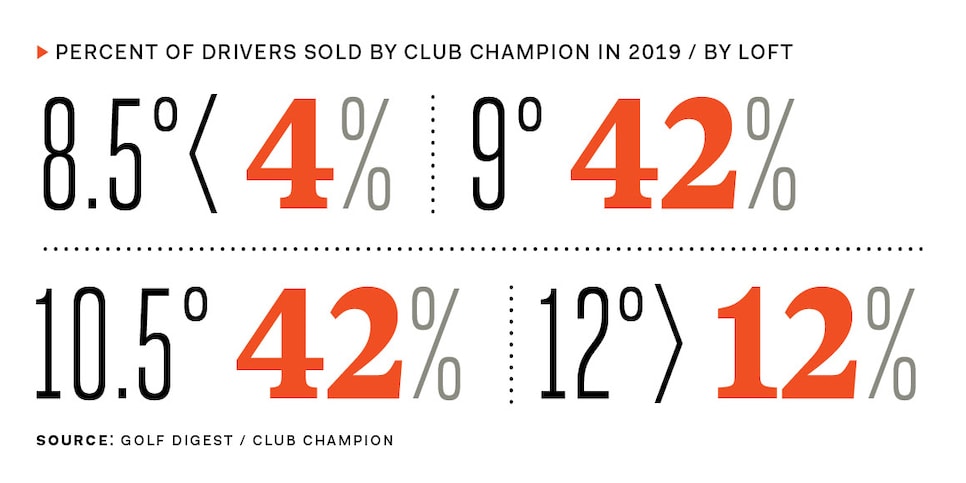
▶ This slice-attacking head has hidden offset, an upright lie angle, forward weighting for lower spin, and an extra weight in the heel to help you square the face. $300
5 HONMA TR20
▶ Carbon-composite crown and sole sections are fused with a titanium frame. Three weights are included to enhance forgiveness, spin or draw bias. $650
6 TOUR EDGE EXOTICS EXS 220
▶ Carbon fiber in the crown, heel and toe mix with a low density titanium. The saved weight goes deep in the wide frame for Tour Edge’s most forgiving driver ever. $350
7 XXIO ELEVEN
▶ The sub-40-gram shaft allows for an extra weight plug at the butt end of the shaft. This raises the balance point to give average golfers more control and power. $650
8 TOMMY ARMOUR 845
▶ A pair of carbon-composite pieces wrap around the crown to allow more mass to fit in the heel. This combats a slice by making it easier to square the face. $300
Less Loft + Upward Angle of Attack = More Distance

▶ Our test with Club Champion featured 20 players with four swing speeds testing four lofts. Yes, those who swing 100 miles per hour or faster saw more distance with lower lofts, but the sub-100-mph swingers also got the most distance with lower lofts. Low lofts saw more roll after landing than higher lofts, too—six yards more. But these weren’t low bullets. The lower lofts yielded the same or longer carry distances because of the group’s upward angles of attack.
More from Golf Digest
Trending now.
9 vs 10.5 vs 12 Degree Driver Loft Chart & Guide

Most experienced golfers agree that driver loft is a very important factor in determining shot distance. A beginner of average golfer wants to know which loft is right for them.
There are three main types of driver lofts. In this guide, I’ll compare 9 vs 10.5 vs 12 degree lofts and tell you which one is right for you.
To determine which loft is best for you, you’ll need to consider several factors, such as:
- swing speed
- ball launch angle
- club head speed
Below, we’ll go into more detail about all of this. We’ll also teach you about some clubs with adjustable driver heads that can help you adjust your swing and get more distance:
- Cobra King Speeedzone
- TaylorMade Stealth Plus
- Tour Edge Exotics C721
What is Driver Loft?
9 degree loft, 10.5 degree loft, 12 degree loft, what is the best loft for a driver, why is loft important, driver loft chart, adjustable drivers: overview, best overall, best for experienced players, best for budget, swing and clubhead speed, angle of attack, age of club, frequently asked questions (faq).
Your loft determines how high your shot will go when the club strikes the ball at impact. There are also other factors to this such as your swing speed, angle of attack, and how high you are teeing the ball up.
But, in plain terms, the loft is the degree of angle formed from the ground and the club head when you set the clubsquarely on the ground.
In most case, the ideal driver loft depends on how fast your swing is. The faster the swing speed, the lower loft you will want in order to increase distance in your golf ball. The slower the swing speed, the higher lofted driver you will want as it will increase carry and roll.
One of the most important clubs in your golf bag is your driver. The reason it is important is because on most par 4s and 5s, this is what you are using off the tee in order to get yourself in a good position for your next shot towards the green.
It all comes down to personal preference but if you are wanting to take your golf game to the next level, you will need a solid driver to do so.
The 3 main options for loft are 9 degrees, 10.5 degrees and 12 degrees. I will go over these below. While you read, run the following video which goes over driver loft which is a great resource as well!
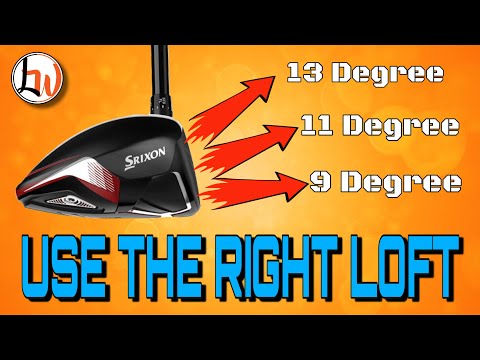
9 vs 10.5 vs 12 Degree Loft Comparison
When it comes to hitting a driver, there are a lot of variables to consider when choosing what loft is best for you. Things to consider are swing speed, launch angle as well as hitting up or down on the ball.
A 9 degree driver loft would be best for intermediate or advanced golfers who have a swing speed over 105 mph. This means that beginner golfers with slower swing speeds should not be considering a 9 degree golf club.
Players who are able to maintain a higher launch angle will benefit from using 9 degrees. The trajectory of the ball will be lower than at 10.5 degrees, so it will also benefit those who hit down on the ball.
Another reason amateur golfers should not have a 9 degree driver is that is diminishes the backspin of the ball and can create a lot of sidespin. Most average golfers already have a slice, which will be amplified if they were to use 9 degrees.
Mid to low handicap players that can maintain a straight shot will benefit from the added distance a 9 degree loft drivercan bring. The 9 degree driver will produce less backspin at impact as it moves at a lower angle of attack, which will allow the ball to carry a longer distance.
Most PGA professionals with a very fast swing speed, like Bryson DeChambeau , use a 9 degree loft (or even lower)!
Related: Check out the best golf drivers you can buy today.
A 10.5 degree driver loft is suited to the recreational golfer who has a slower swing speed or doesn’t hit the ball on an upward launch angle. Most golfers tend to hit downwards on the ball and a 10.5 degree driver will help you get the ball into the air even without the fastest of swings.
If you were to look at most stock drivers in a golf retail store, the majority of them would be 10.5 degrees. The reason for this is that recreational and higher handicap golfers make up a majority of the sport.
A 10.5 degree driver has a more positive attack angle than 9 degrees, which will give you a more optimal launch and less spin if your swing speed is lower.
If you are an average weekend player with a medium swing speed, I would definitely recommend going with a 10.5 degree driver. With the added loft, it will help you get the ball into the air and give the majority of average golfers more distance off the tee.
Just as I went over for 10.5 degrees, 12 degrees is much the same. A 12 degree driver is more suited for beginner and higher handicap golfers as it gives you an even higher launch off the tee to add some more distance.
A 12 degree driver loft is suited for golfers who have swing speeds under 95 mph and are looking for a little added distance off the tee.
Another benefit to a 12 degree club is that it allows you to hit the ball straighter due to an even more positive attack angle. The reason for this is that the higher the ball goes due to the loft of the driver, the less likely it is to have sidespin on the ball. When sidespin happens, it causes the ball to slice off to the side and most likely end up off the fairway in the rough somewhere.
A launch monitor sometimes calls this “smash factor”, which decreases with a higher driver loft angle.
If you were to use a 12 degree driver with a high swing speed, the higher loft of the driver will create more spin on the ball, which is a drawback. This will cause the ball to fly too high in the air and not as far distance.
That is why it really depends on what your swing speed is when deciding the correct loft.
This question is quite tough to answer because it is very subjective and ultimately comes down to personal preference for each player. The best way to determine which driver loft is best for you is to head into any golf retail shop and hit a few variations into the screen. The launch monitor there will tell you what kind of club head speed, ball speed, spin loft and launch angle you are working with. This will then give you the best idea on what degree will work best for your swing.
Once you have that information, you can hit a few different brands with different lofts to see what works best with your swing. Golf is a game of feel, so whatever feels best will work the best.
In our opinion, the best and most common loft is 10.5. It seems to be the sweet middle of not too much loft, but enough to get the ball into the air while maximizing the most distance.
Driver loft is important because having a club that you are comfortable hitting off the tee is important to succeed. Loft is also important because it dictates how high your ball fly’s into the air off the face of the club.
If you can consistently hit straight off the tee, you will give yourself easier shots after that to get a nice score and have a good day on the golf course.

A great way to see what degree loft is best for you is to look at the above chart. This chart does a great job showing optimal distance off the tee with different lofts, depending on what your swing speed is.
You can see that the slower swing speeds near the bottom of the chart trend upwards in distance the higher lofted they go. The high swing speeds at the top of the chart actually start to lose distance the more lofted they go because spin rate in the air actually causes a decrease in average driver distance.
One other great thing that ties into loft is the fact that some clubs come adjustable instead of having a static loft. What this means is that there is a screw on the head of the driver that you can unscrew and adjust the loft, lie and center of gravity on the fly.
Having a dynamic loft is a big perk for new golfers who are just learning the game.
You can purchase a 10.5 degree driver, but then adjust the head to have it play as a 10, 9.5 or even 11.5 degrees. If you want to try something new or you have an increased swing speed after a few rounds of practice, this is a great option.
Next, we’ll show you you some clubs with dynamic loft that you can adjust the launch angle on.
Best Adjustable Golf Clubs
- Cobra King Speedzone
The Cobra King Speedzone comes with an adjustable hosel that will allow you to choose from seven different lofts apart on the club. You adjust this using the wrench that Cobra provides you. You use the wrench to unscrew the head from the hosel and then spin it to where you want to use. You can either increase or decrease the loft, depending on what you are looking for.
Another thing that you can adjust is a draw or fade bias setting. Doing this will turn the clubface slightly to produce a draw or fade, depending on what you choose. These features sound advanced for average golfers, but are quite useful as you find the right golf swing.
Overall, the Speedzone has a very forgiving driver design that is made for the average golfer.
The other great thing about the Cobra King Speedzone is you get access to the Cobra Connect app on your smartphone. The app then tracks all of your hits, so you can actually see and compare how you hit the ball with different lofts. This will help you decide on the optimal loft.

The Stealth Plus is the newest release from TaylorMade and it is taking the world by storm on tour. The all new carbon face on the club is completely different from normal titanium. It is 44% lighter than a titanium face and the carbon layer delivers incredible ball speeds for maximum distance.
The Stealth Plus also has an adjustable hosel much like the Cobra King Speedzone. You can unscrew the head using the included wrench and adjust the loft up or down depending on what you are looking for.
Another cool new feature of the Stealth Plus is the sliding weight track. As the carbon face of the driver is lighter than usual, TaylorMade takes that weight savings and puts it into the sliding weight track. This allows you to unscrew the weight track and shift weight around to create your desired ball flight, draw or fade. Once you have the weight where you want, you just screw it back into place and start hitting!
The Stealth Plus is made for more experienced golfers with a faster clubhead speed. If you want modern drivertechnology though, it is the top of the pyramid. It is the club used today by Dustin Johnson, Tiger Woods , Scottie Scheffler , and more.
Click here to read our full review on the TaylorMade Stealth driver.

The last adjustable driver I am going to go over quickly is the Tour Edge Exotics C721 . This is a budget club that is perfect for a beginner player who is new to the game. It isn’t as expensive as other premium clubs, but can provide you with the same specs and flexibility.
The Exotics C721 has an adjustable hosel that allows you to adjust the loft up to 2 degrees up or down and also change the lie angle through a range of 3 degrees. It works the same as the others where you unscrew the head, twist the hosel to whatever loft you are looking for, click it back in and screw back in.
This club also includes adjustable sole weights much like the TaylorMade Stealth Plus. It is a 10 gram adjustable back weight that you can position to adjust the center of gravity setting on the club. You can optimize your hits and MOI on the club.
I would definitely recommend checking this out if you don’t want to spend a lot of money, but are looking for adjustability.

What Factors Affect Driver Launch Angle and Distance?
The loft is only one factor for a player to consider when trying to get longer distance.
How fast you swing the club will affect your performance on the course. A faster club speed will introduce spin on your golf ball. This is why professional golfers with fast swing speeds want a lower driver loft.
An average loft of 10.5 degrees with be suitable for a wide range of golfers.
DID YOU KNOW: You should also match your golf ball to your swing speed too.
The actual angle you make contact with the golf ball at will effect ball flights greatly. Having a high loft means nothing if you are swinging down on the ball at a negative angle. This is why having a dynamic loft could be big – you can adjust your loft to match your swing style.
When you make solid and straight on contact with the golf ball, you also minimize your ball spin. This will allow your ball flight to make a consistent and straight ball flight. When you swing inside-out or outside-in and make indirect contact with the golf ball, you add spin to it.
Spin introduces a slice or a hook and takes away distance from you.
Advancements in driver technology have really comet a long way in recent years. Modern clubs have tungsten weighting which lower the sweet spot and reduce the change of a mishit. It has allowed even the slowest swingers and senior golfers to play 10.5 degrees and has pushed 12 degree clubs nearly out of the market.
If you are buying an old club second-hand, then you could consider a higher loft to help you out.
Hopefully this loft guide helps you pick the right club for your skill level. The majority of clubs you will see are 10.5 degrees and are best for every golfer.
If you aren’t sure what to pick, measuring your average club head speed with a launch monitor will help you pick the right driver for distance.
Remember that the club angle is only one factor to how well you will hit the ball. Your actual loft, created by the upward attack angle of your club against the ball, is another factor that will effect the driver launch angle. Different driver shaftscan also effect your swing path too.
An adjustable driver can help you match your hardware to your golf swing type. Our picks for the best adjustable driversare:
These clubs can help you adjust loft at impact on the golf ball and allow you to play around with higher or lower-lofted drivers.
What is the average driver loft?
The most common loft that you will see is a 10.5 degree driver. This is right in the middle of most lofts available and will be tailored to the most golfers.
What loft do PGA Tour Pros use?
If you were to do a survey, you would probably find that most PGA Tour Pros use a 9 degree driver. PGA Tour golfers have some of the fastest swing speeds on the planet and they want to hit the ball as far as they can. Professional golfers will use a 9 degree driver loft in order to decrease spin for their faster swing speed.
Who is a 9 degree loft best for?
A 9 degree driver is best for low to mid handicap golfers with swing speeds over 100 mph. They are also good for golfers who are able to hit down on the ball with a downward angle because the lower loft will add backspin and increase distance off the tee.
Who is a 10.5 degree loft best for?
A 10.5 degree driver is an effective loft for recreational golfers who have swing speeds lower than 100 mph. The higher lofted driver will provide you with increased launch off the tee, which will provide more distance.
Who is a 12 degree loft best for?
A 12 degree driver is best for very slow swing speed golfers. The high loft will allow them to get lift on the ball off the tee in order to provide more distance.
Ryan William
With over 25 years hands-on experience in the golfing world, Ryan is not just an avid golfer but a topical authority. His journey has had him delve deep into the nuances of the sport, from mastering the swing to understanding new golf technology. As an entrepreneur, Ryan is at the forefront of the latest golf trends, reviewing all new clubs, accessories, and training aids. His insights and expertise are backed by a prolific writing career, with over 1000 articles published across various platforms. Ryan's commitment is clear: to guide and inform the golf community with unparalleled knowledge and passion.
Last update on 2024-04-25 / Affiliate links / Images from Amazon Product Advertising API
Leave a Comment Cancel reply
Save my name, email, and website in this browser for the next time I comment.
Modern Golf Apparel

Save on TaylorMade, Callaway & more!

Disclosure: When you purchase through links on our site, we may earn a commission. As an Amazon Associate I earn from qualifying purchases. Learn more>

Critical Decision: What Driver Loft Should You Use
Golf is a never ending quest to try and play your best. Whether that means changing your swing, buying new equipment, getting lessons, and everything in between.
One area that can have a big impact on your game is your driver. Some average golfers fear a driver and leave it in the bag for their more trusty 3-wood. While others love their driver and hit it as often as possible.
The better you can hit it off the tee, the easier it is to score well. While there are a lot of components to becoming a good driver of the golf ball , the loft on your driver is a big factor.
I’m sure you’ve asked yourself, “What loft should my driver be?”
As you’ll learn today, picking the right driver loft can be easy or slightly complex to try and get the most distance possible. But the last thing I want to do is overwhelm you with technical jargon that might not help you play better golf.
So, to help you find the perfect driver loft, I broke this into two parts; the beginner version (for everyday recreational golfers) and the advanced version (for those who are serious about reaching their golf potential).
Driver Loft Pt 1: Beginner
If you’re struggling to hit the ball consistently well off the tee, your loft might be to blame. While there are a lot of factors to consider including the driver head, shaft weight, shaft flex, and more, loft should be a top priority.
Too many golfers try to hit a lower lofted driver to get more distance. This is because most people think about loft and assume, “Higher loft means the ball won’t go as far.”
While it makes sense in theory as your 6-iron has much less loft than your pitching wedge and thus, goes much farther. But you also need to consider shaft length and club speed too.
When it comes to driver ball flight, it’s an entirely different story. Playing an 8-degree driver vs. a 10-degree driver doesn’t guarantee that you’ll hit it longer. For some golfers this might be the case but everyone has to experiment to find the optimal loft.
Let’s dive into why that’s the case…
Most Golfers Need More Driver Loft
If you’re an everyday golfer, remember these two statements:
- Driver loft can help you hit if further
- More bounce can help you get out of the bunkers
While I won’t go into why bounce is your friend in the bunkers (read more about that here ), driver loft is also an ally for most players. The first reason why more loft is a good idea for the everyday golfer is that it will help you hit it longer (with both carry distance and maximum distance).
So, how does more loft help you hit it further?
Loft can help golf balls stay in the air longer and thus, have more carry and roll for longer total distance. This is especially good for those with a slower swing speed or don’t have an upward attack angle. There is a reason beginner drivers all have higher lofts.
Another reason why most players can benefit as much loft is accuracy off the tee. Because who doesn’t want to hit more fairways ? For most golfers, a slice is all too common and a lower lofted driver can actually make it even worse.
The lower the loft on your big stick, the easier it is to have a more severe slice. If you’re slicing the golf ball more than you care to admit, you would benefit from a 10.5 degree or maybe even 11+ degree driver. This will help straighten out your ball flight and likely increase total distance too.
Standard Driver Lofts
So, what is the best driver loft without getting into all the details the average golfer doesn’t need?
Driver lofts for most golf clubs range from roughly 8-11 degrees. For example, the popular Callaway Rogue ST Max driver has three options; 9, 10.5 degree, and 12 degree actual loft. While the TaylorMade Stealth is available in the same three options.
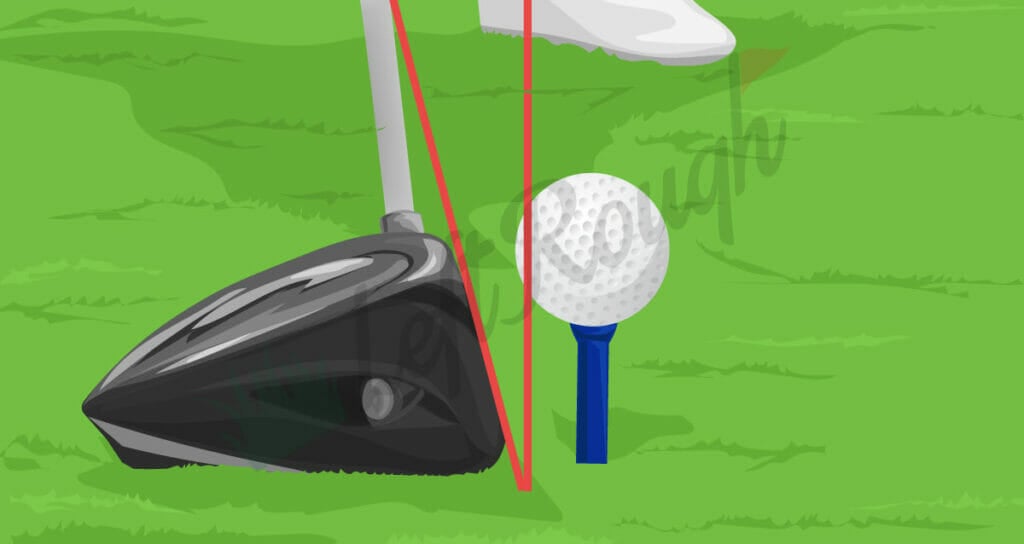
Like other golf equipment, these are adjustable drivers on the market . Which means you can hit the ball higher and have a higher launch angle by adjusting a new driver .
Overall, the best loft is a higher lofted driver that will benefit the majority of players. 9.5-10.5 degrees of loft. Paired with the right ball position , a shaft that helps get the proper spin rate , and proper driver attack angle will lead to more consistent drives.
Faster swing speeds or those who have downward attack angle might benefit from less loft (more on that in the next section).
Driver Loft Pt 2: Advanced
The first section is a good starting point but there’s a lot more we can get into when it comes to finding the correct loft on your new driver. If you’re reading this section, chances are you’re ready to geek out some golf knowledge to play your best.
Getting the right golf clubs, including driver loft, can help your ball flight, consistency, and confidence. Here are some other factors to consider when it comes to picking the right loft for your driver.
Swing Speed
The first thing you need to figure out before deciding on a loft is your swing speed.
So, why is swing speed so important?
Swing speed is the speed of the club that is traveling right before impact (also known as club head speed ). The faster the speed, the more distance.
The highest recorded speed ever was 156 mph by Connor Powers during the 2014 World Long Drive Championship. Obviously, 99.99% of us aren’t long drive champions and thus, need a different loft to match a lower swing speed.
So, what’s the average speed for a male golfer?
According to a study from Trackman , who collected data from more than 10,000 golfers, the average male amateur has a 93.4 mph club speed for a total distance of 214 yards .
The study also found that only 7% of players swing over 110mph (the PGA Tour Average is 113mph and LPGA is 94mph) and 45% of players were between 91-100mph.
This is the most common swing speed for the everyday golfer. Take a look at the graph below to see more average swing speed numbers. ( Make sure to read the full article on average distances for golfers . )

So, why does all this matter when it comes to picking the right loft for your driver?
Because the more speed you create in your swing, the less loft you likely need with a driver.
One of the more general rules in Golf Digest, Golf Magazine, and other publications is that higher handicap players need more loft. This is a general rule but as you’ll learn below, there are other factors too. This is because slower swing speeds don’t have as much speed and those players can’t get the ball high enough to max out distance.
A lot of times golfers would buy a club that didn’t have enough loft and their drives would suffer as a result.
How to Measure Swing Speed
Step one is measuring your swing speed which is pretty easy thanks to personal launch monitors . If you’ve already bought your own launch monitor for a golf simulator setup or to make practice more efficient, use it to measure your driver swing speed.
After warming up for 20-30 balls, work your way up to hitting the driver. Then, hit 10 shots and notate the average swing speed (not to be confused with ball speed ) of the driver. Take the average of the 10 balls and you will have a baseline to work with.
If you haven’t invested in a personal launch monitor yet, you can also get this measurement at your local golf store. You don’t need to do a personal club fitting either and they should help you 100% free.
Go here to read our full article on how to measure your swing speed.
Attack Angle
The second metric to figure out before picking loft is your attack angle.
This Golf Digest article provided some extra insight about the importance of attack angle. Specifically, how players now have a positive attack angle, which wasn’t always the case in the past.
“With an upward angle of attack, a player creates a more dynamic loft at impact, or the way the loft measures at impact compared to its static measurement. With less measured loft, an upward angle of attack and more dynamic loft, you’re creating the opportunity for high launch and less spin, a key metric for longer drives that hit the ground on a flatter angle, leading to more rollout.”
The same article went on to discuss how attack angle is changing. The PGA Tour average actually has a negative attack angle vs. the LPGA Tour where players have a positive attack angle. The upward angle compared to a downward angle is quite different and why each type of player needs the right loft for their golf swing.
Launch Angle
The third thing to think about is launch angle which is different from attack angle. Launch angle is referred to as the angle the ball takes off relative to the horizon. This number is closely related to dynamic loft which we’ll cover in the next section.
According to certified fitter Jamie McConnell, “Having the correct launch angle and combining it with the correct spin rate is really important in order to get the most out of a golfer’s clubs during a fitting. Too high or too low a launch angle and the golfer will lose distance.”
The average launch angle on the PGA Tour is just shy of 11 degrees while the LPGA average is about 13 degrees. What about amateure golfers?
Trackman found this data for male amateurs launch angles:
- Scratch or better = 11.2 degrees
- 5 handicap = 11.2 degrees
- 10 handicap = 11.9 degrees
- “Average handicap golfer” (14.5) = 12.6 degrees
- 18 handicap = 12.1 degrees
Dynamic Loft
In the past, it was easier for players to learn which loft they needed based on clubhead speed and skill level. But something called dynamic loft is making it a little more complex when it comes to picking the right driver loft.
Trackman Golf describes dynamic loft as, “The vertical angle of the club face at the center-point of contact between the club and ball at the time of maximum compression. Dynamic Loft is the amount of loft on the clubface at impact and is measured relative to the horizon.”
So, what affects dynamic loft?
A lot of factors including:
- How the shaft bends at impact
- How the golfer releases the club
- Attack angle (as previously mentioned)
- The club face (open or closed to the path)
- Where the club makes contact with the ball
This is why it’s not as simple as saying slower swing speeds need more loft. Does that rule hold true for the most part? Yes, but it’s not quite as cut and dry as it was in the past now that we can measure dynamic loft.
But as Trackman discussed in the same article, dynamic loft is wildly important. Here’s why…
“Creating the proper dynamic loft is important to creating the optimal trajectory and maximizing carry. Too much dynamic loft can send the ball too high into the air and reduce the golfer’s distance. Too little dynamic loft can send the ball too low making the ball roll out excessively causing it difficult to judge distance.”
Here are the Trackman averages of dynamic loft based on different type of handicaps:
- Scratch or better = 13 degrees
- 5 handicap = 13.2 degrees
- 10 handicap = 14.1 degrees
- “Average handicap golfer” (14.5) = 15.1 degrees
- 18 handicap = 14.3 degrees
Dynamic loft is an important factor in dialing in the right loft and why working with a club fitter might be the best solution.
Spin Rates
The final thing to consider with picking the right driver shaft and loft are the spin rates. This is where you might need to work with a fitter to try out different shafts. For solid ball strikers, playing the right shaft is arguably more important than loft or clubhead.
The wrong shaft can make golf a lot harder as your misses will be all over the golf course. But the right shaft can make the game a lot easier by creating consistent shots and a tighter shot dispersion .
According to Graff Golf, “When the average PGA Tour player hits a driver, their spin rate is typically in the area of 2,700 RPMs. For a player who is a scratch handicap, their average is right around 2,900 RPMs. If you are a 10-handicap, you are probably around 3,200 RPMs.”
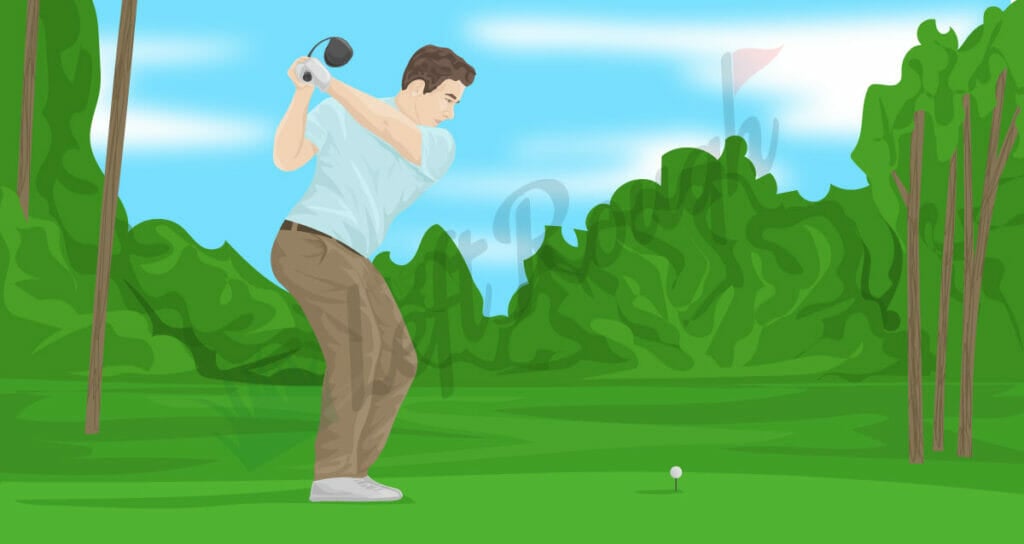
FAQs About Driver Loft
Do you still have questions about finding the right amount of loft for your driver? Check out our FAQs and answers below to find out more now.
What loft driver do pros use?
Professional golfers use all types of loft and are 100% dependent on their swing speed, attack angle, launch angle, and other factors. As mentioned above, one of the most important factors for elite golfers is dynamic loft.
Andrew Rice of Berkeley Hall Golf Club had this to say about dynamic loft. “Dynamic loft often will show me what a golfer is capable of, as better golfers seldom hit shots with too much dynamic loft. Learn to deloft the club face into impact and you are well on your way to being able to compress the golf ball.”
The best players in the world are used to delofting the club but swing speed, ball speed, and other factors come into play with driving off the tee. For example, Bryson DeChambeau uses a very little amount of loft.
As quoted in Golf Monthly , “Bryson was using a Cobra King Radspeed driver which had only 7.5 degrees of loft but in 2022 he has switched to a Cobra LTDx which only has five degrees of loft.”
Most golfers would get the ball more than 10 feet off the ground with that little loft. While other pros like Justin Thomas play a driver with 9.5 degrees of loft.
Needless to say, there’s a big gap between the lofts of professional golfers. Some might go as low as five like Bryson, while others play more conventional lofts.
Should I do a driver fitting?
If you’re a committed golfer and someone who takes your game seriously, I think a driver fitting is the best $100 (or so) you can spend. Think about it, the driver sets up your approach shots on nearly all par 4s and par 5s. The better you can hit your driver, the easier you’ll have it 14/18 holes during the round.
As you can tell from the advanced section above, there are a lot of components when it comes to getting the right loft. For solid golfers it’s not as simple as just playing a little more loft. There are so many factors to consider including shaft flex, shaft weight, overall club weight , driver head, driver loft, hosel settings, and more.
You want to have an enormous amount of confidence with your driver, which is why it’s such a good idea to get a custom club fitting . Plus, the fitter will usually give you some best practices on how to match your fairway wood and hybrids based on your driver settings.
What is spin loft?
Spin loft is another piece of data that can help you find the best loft for your driver.
According to Peter Field Golf , “Spin loft is approximately the angle between the dynamic loft and attack angle. Spin loft is actually the three-dimensional angle between the direction the club head is moving (both club path and attack angle) and the direction the club face is pointing (both face angle and dynamic loft).”
What is the difference between 9.5 and 10.5 degree driver?
The difference between the two lofts is only one degree. But depending on your golf swing, speed, and other factors, it can have a big impact. One degree more or less with your driver loft can change your total distance, accuracy, and ball flight.
Most adjustable drivers allow you to change the loft about two degrees with each club. Which is why it’s a good idea to test out different lofts on the range to see which performs best.
For most every day, mid to high-handicap golfers, 10.5 loft will help driving performance. Older golfers shopping for senior drivers should always consider a minimum of 10.5 degrees of loft and even experiment with a little more loft.
Will a lower loft driver go further?
Maybe, a lower loft driver will usually make the ball go further if the conditions are right. Lower loft means a lower trajectory, which if the conditions are firm or fast, will increase the total distance.
However, if the conditions are wet and cold, lower loft might actually hurt your distance.
Should you add loft to your swing?
Christop Bausek of Progress Golf said this on Trackman’s website about adding or taking away loft in the swing:
“Dynamic loft is a very good indicator of whether a golfer is adding too much loft or delofting the club too much. But be careful with drivers…hitting the ball high on the face will create a higher dynamic loft due to the roll of the club face.
Dynamic loft is the main factor for launching a ball into the air. There is a myth that “hitting down on the ball gets the ball up. Instead, pay attention to the dynamic loft if you want to get the ball up.”
Remember, a teeing up a driver and requires you to hit up on the ball. This is not the time to hit down on a golf shot. You want to tee the ball high and hit up on the ball.
Does a higher loft driver help my slice?
More loft can help reduce your driver slice but it’s not an instant cure. However, adding loft and adjusting your clubhead to a draw setting can make a big difference. They also make anti-slice drivers that have offset made to minimize the slice.
But don’t forget, this is a short-term solution. Fixing your slice means changing your grip , backswing, or something else in your swing. This usually takes some more extensive practice time to make the changes stick.
While you’re making swing changes, it’s always a good idea to optimize your driver settings to help you in the short term.
What degree driver does Tiger Woods use?
Throughout his illustrious career, Tiger has played all sorts of different equipment. Currently, according to the PGA Tour , Tiger is playing a 9-degree TaylorMade Stealth Plus driver. But he isn’t opposed to changing out shafts and club heads on a week-to-week basis.
It’s still hard to believe that in his dominance in the early 2000s this guy was playing a steel shafted driver! And absolutely lapping the field in terms of most distance.
Final Thoughts to Maximize Distance
Driver loft is an important part of your tee game and something you need to consider. As you can tell, you can make it easy or wildly complex but it depends on your skill levels.
For the majority of amateur golfers with a 14+ handicap, slightly more loft will help with distance and accuracy. But since most drivers are adjustable, it’s worth trying out on all settings to see how more/less loft impacts distance and trajectory.
For single digit handicap golfers and scratch golfers, driver loft is a component but not the end all be all number. You still need to consider dynamic loft, attack angle, launch angle, driver shaft, and more. It’s best to use a launch monitor and/or get a professional fitting to make sure the most important club in the bag is dialed in.
Regardless of skill level, don’t be afraid to experiment with different lofts, club heads, and driver shafts . The driver is one of the three most important clubs in the bag so make sure it’s optimized for your game.
What Driver Loft Should You Use? (Full Chart Based On Swing Speed)
Fact Checked By Ben Jenks
A 10.5° golf driver loft is ideal for beginners and most golfers. If you’re new to golf or have a slower swing speed, a driver with a higher loft will suit you better. A higher loft driver is more forgiving since getting an upward attack angle is easier.
Less loft allows you to gain more distance and less spin. Generally, the faster your swing speed, the less lofted driver you need.
I see many golfers play with the wrong driver loft, which hurts your drives. The lofts in drivers usually range from 8° to 14°.
To help you visualize, I’ve also made a driver loft chart. If you read this article carefully, you’ll understand which driver loft you’ll need as your game evolves.
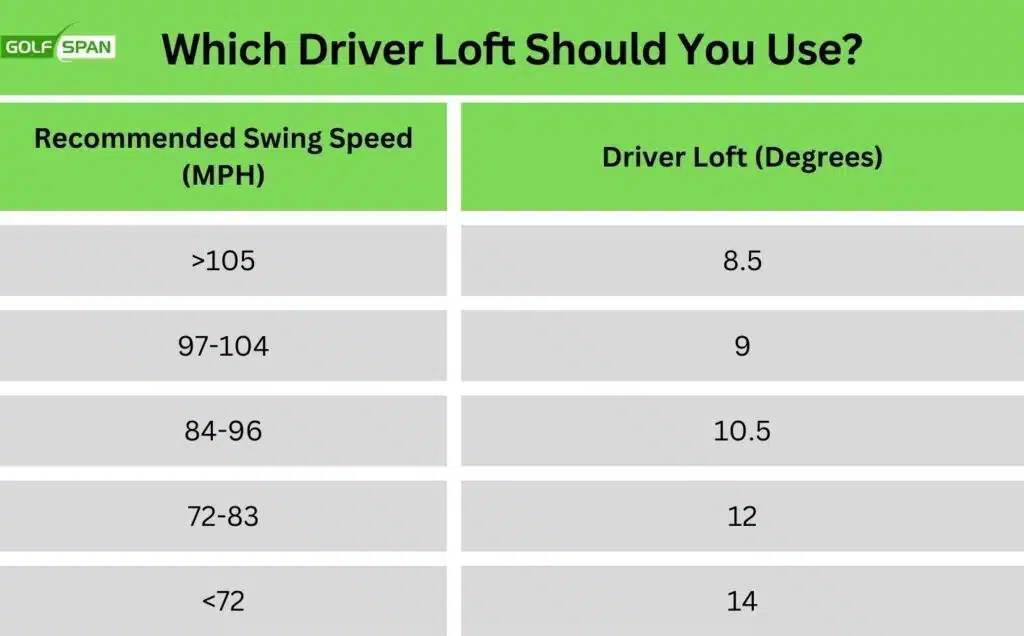
Note: You can estimate which driver loft will suit you and your swing speed, but finding the best one for every golfer will be different. That is why I always recommend getting your clubs fitted . Check out Brendon’s full club fitting experience at the PGA Tour Superstore .
What Driver Loft Should High Handicappers Use?
What driver loft should low handicappers use.
- Who Should Use a High Lofted Driver?
Who Should Use a Low Lofted Driver?
Is a higher loft driver better, what loft should i use for my driver, does lowering driver loft open the face.
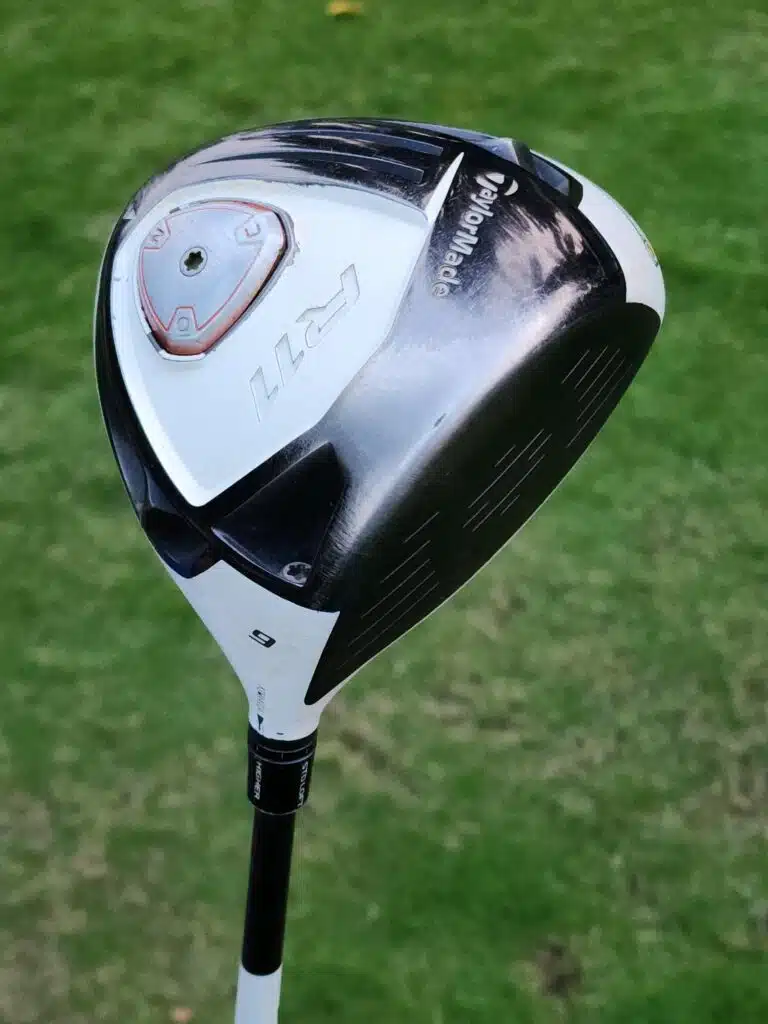
A driver with a 10.5-degree loft is ideal for high handicappers and beginners. This is why most beginner drivers and forgiving drivers have a high loft of 10.5° or above.
A higher loft driver provides more forgiveness and a higher ball flight but has more spin and less distance than a lower loft driver. Since high handicappers need to focus on hitting more fairways off the tee than getting the maximum distance, a 10.5 driver suits better.
Higher-lofted clubs are also easier to hit. This is why a 9-iron is easier than hitting a 4-iron, but it doesn’t go as far. I won’t explain each golf club’s loft since this article is focused purely on the driver’s loft.
If you’re struggling with your drives and think your driver loft is to blame, using the correct driver loft for your swing can improve your output. In most cases, you won’t need a new driver shaft either.
If you’re a high handicapper, I suggest you use a higher loft driver than the one you currently use.
You have three options if your driver loft remains too high for your swing.
- Find a driver with an adjustable hosel that lets you weaken the clubface’s loft angle in moderation.
- Consider the costly approach of customization.
- Think about a strong lofted 3-wood with 13 to 13.5 degrees of loft.
Most golfers use a 9° or a 10.5° driver, but you can also experiment with a 12-degree driver.
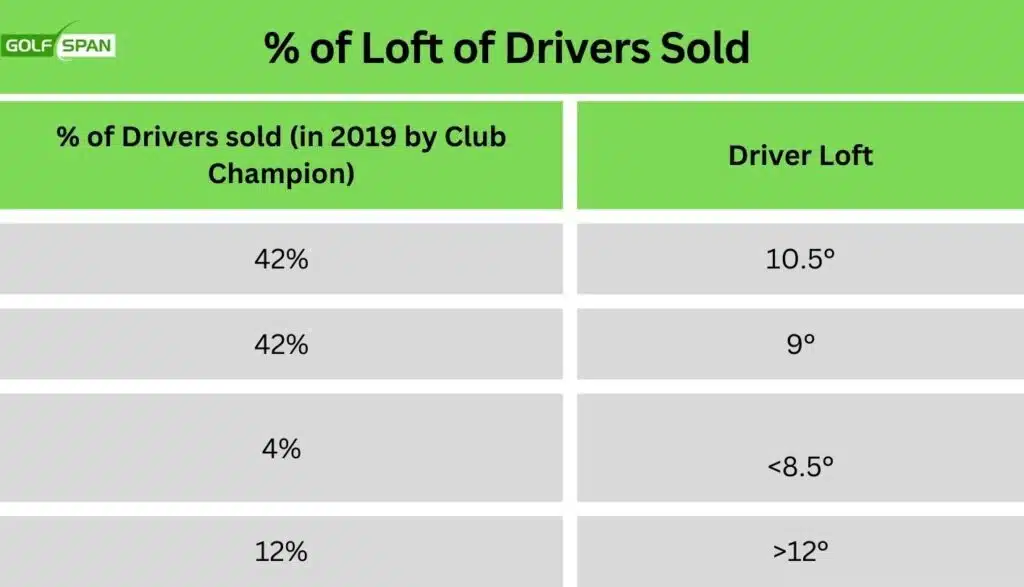
A 9-degree driver loft is most suited and commonly used by professional golfers and low handicappers.
As your golf game improves and your swing evolves (or gets faster), you must reconsider your driver loft. Low-handicap golfers want to maximize their driving distance and reduce spin.
These players are best positioned to swing a 9-degree driver for low spin, controlled ball flight, and maximum roll.
On the other hand, if you have a fast swing speed (above 100 mph) and you’re using a high-lofted driver, you might have an open-face contact, which results in a slice.
I had the same problem, and going from a 10.5 to a 9.5 driver made a difference (along with spending hours at the driving range).
It’s important to remember that a lower loft driver won’t always be better for fast swing speeds, and there’s no one best driver loft for distance. While golfers like Bryson DeChambeau stand out for having a 5-degree lofted driver , many PGA tour players also play with a 10.5-degree driver.
I’ve created this table showing the statistics of some professional golfers. This table highlights that loft isn’t the only factor when maximizing distance.
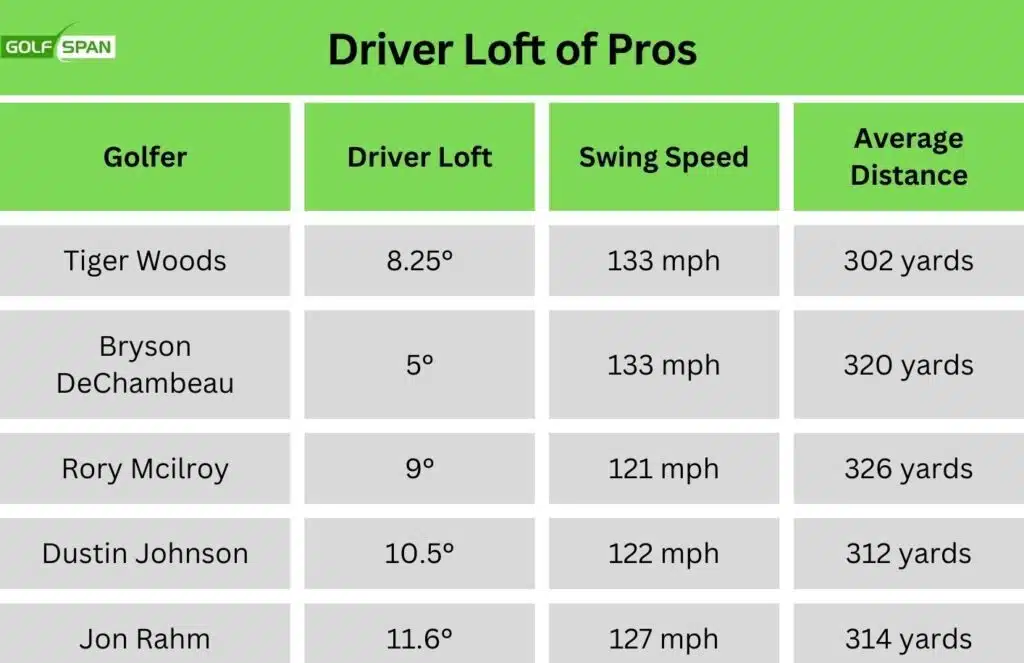
Lower Lofted vs High Lofted Drivers
9.5° or less loft is considered to be a low lofted driver. Anything above 10° loft is in the category of high-lofted drivers.
Higher lofted drivers aid most amateurs since they can improve their launch, accuracy, and spin off the tee.
If your driver loft is too low for your clubhead speed, you will produce inadequate carry, distance, and erratic dispersion.
Swinging a lower lofted driver can cause you to slice your golf shots and spend every hole in the right rough. Conversely, higher lofted drivers carry a draw bias, provoking snap hooks.
But, with faster swing speeds and high lofts, the open clubface causes you to generate increased spin, causing your ball to fly higher and follow an aggressive descent to land softly. As a result, it eradicates roll, hampering your total yardage potential.
Who Should Use a High Lofted Driver ?
Generally, a high-lofted driver is best suited for:
- New golfers
- High handicappers
- Golfers with slow swing speeds
- Golfers who can’t hit the ball upwards
- Senior golfers
Low-lofted drivers are usually preferred by:
- Golfers with a fast swing speed
- Low handicappers who want more carry distance
- Golfers who struggle with too much spin.
- Golfers that have a higher launch angle than desired
Yes, in my experience, a higher lofted driver is better for most amateur golfers, as it is easier to consistently launch your golf ball from the tee. However, a higher loft driver can cause faster swingers to generate excess spin and a ballooned shot for a loss of roll and total distance.
Golfers with higher swing speeds should use a 9-degree driver or less. Conversely, golfers with moderate swing speeds are advised to play with a 10.5-degree driver. Finally, slow swing speeds are best equipped to strike a 12-degree or weaker driver.
Yes, lowering the driver loft opens the club face angle, as shown by Mobile Clubmaker Golf in this Youtube video. You’ll notice that as he strengthens the loft, the clubface opens. Conversely, when he weakens the loft, it closes the angle of the clubface, creating a draw bias setup.

Matt Callcott-Stevens
Matt has played golf since he was 4 years old and has written over 150 articles at GolfSpan since 2021. Matt specializes in product reviews using his postgraduate degree in Sports Marketing from Johan Cruyff Institute. Matt has a handicap index of 10.8 and currently plays weekly at Pilar Golf Course near his home in Buenos Aires, Argentina. He also loves his Callaway Odyssey Exo Rossie putter and likes a pepper steak pie with curry gravy at the turn. You can connect with him on LinkedIn .
- Best score : 70
- Favorite club : Callaway Odyssey Exo Rossie
- Favorite ball : Srixon Q-Star Tour
- Favorite food at the turn : Pepper steak pie with curry gravy
- Matt Callcott-Stevens https://www.golfspan.com/author/matt-callcott-stevens Achievable Golf Goals To Lower Your Score in 2024
- Matt Callcott-Stevens https://www.golfspan.com/author/matt-callcott-stevens Titleist Pro V1 vs Pro V1x: Differences, Pros, Cons
- Matt Callcott-Stevens https://www.golfspan.com/author/matt-callcott-stevens 7 Best Golf Balls For Slow Swing Speeds: Pros, Cons, Reviews
- Matt Callcott-Stevens https://www.golfspan.com/author/matt-callcott-stevens 5 Best Golf Swing Analysis Apps: iPhone, Android, & Free
You might also like these

CONNECT WITH US

What Loft Of Driver Should I Use?
Are you wondering what loft of driver is best for your game? Here, we take a look at the different factors that need to be considered
- Sign up to Golf Monthly Newsletter Newsletter
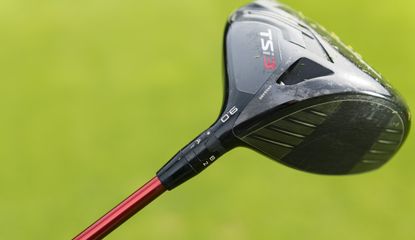
Along with your putter, the driver is one of the most frequently used golf clubs in your bag, making it one of the most important to get correct regarding set-up. If you are able to put the ball in play off the tee, then your scores will only improve.
There are a number of factors that can hinder your performance with your tee shot, one of those being loft. However, what is the correct loft that you should be using? It’s a frequently asked question and one that will vary from person to person and is dependent on a number of factors that could get very technical and in-depth.
While things like launch angle, dynamic loft and impact location are important and play a role in deciding the best loft for you, we're going to try and keep it simple. Ultimately, there's no substitute for going to see your local pro and have a hit on a launch monitor to assess your swing properly.
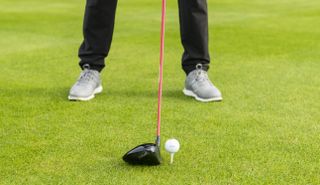
It's important that you have the correct loft for your driver
Why Will Most Golfers Benefit From More Loft?
Generally, the slower the swing or club speed, the higher the loft of the driver needs to be to optimise both carry, roll and forgiveness. However, it must be said, a higher loft won’t always work for everyone. If you do have more loft though, you are more likely to get the ball airborne off the tee.
What Is Spin Loft And Why Is It Important?
It sounds complicated, but it isn’t. The reason you need to know what spin loft is, is because it affects the amount of backspin you create, which in turn affects the distance the ball will travel.
Spin loft is the difference in angle between your attack angle (how much up or down the clubhead is traveling at impact) and the dynamic loft (the loft presented to the ball at impact).
The higher the spin loft, the more backspin you create. So, if your attack angle is downward significantly, the chances are your spin loft is quite high and you create high levels of backspin. By high, we mean above 3000 rpm. This tends to be great for accuracy, but not for distance.
Get the Golf Monthly Newsletter
Subscribe to the Golf Monthly newsletter to stay up to date with all the latest tour news, equipment news, reviews, head-to-heads and buyer’s guides from our team of experienced experts.
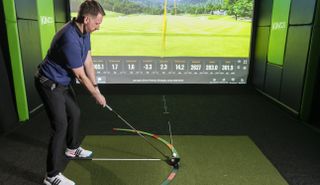
Using software like TrackMan will help find out what your spin rate is for your driver
Who Needs A High Lofted Driver?
1. Slow Swingers
Someone with a slow swing speed (85mph or less) needs more loft on their driver. Why? Well, imagine firing water from a garden hose at a plant pot on the other side of the garden. If someone were to turn down the pressure of the hose, you would have to tilt the nozzle upwards to try and maintain the distance the water is traveling. The same applies to the loft of your driver. Golfers with this swing speed would typically benefit from a driver between 12-14° of loft.
2. Upward Hitters
Golfers that hit up on the ball (have a positive attack angle) will tend to spin the ball less because their spin loft is lower. So they can therefore afford to have slightly more loft to maximise distance. However, an upward attack angle will also tend to launch the ball higher anyway, so the 'loft up' message applies slightly less here.
3. Those That Use Low And Front Weighted Drivers
Drivers that possess a low and forward centre of gravity, be it through the position of front tracks or heavier sole weights, tend to generate less spin so require a higher launch angle (created by using a higher loft) to maximise distance.
Currently on the market, there a number of best golf drivers for distance . However, it is worth noting that a higher lofted driver is also more forgiving because it is harder to curve the ball.
Who Needs A Lower Lofted Driver?
1. Fast Swingers
If you’re in this bracket (105mph club speed or more) then you probably don’t need as much loft as a slow swinger because your ball speed is sufficient to keep it traveling on the optimum trajectory. Anywhere between 8.5-10° will usually suffice. If you have a mid swing speed of 95-104 mph, a driver loft of between 10-11.5° will normally be a good starting point.
2. Downward Hitters
If you hit down on the ball, you’re likely to have high spin loft, so using less loft will actually reduce your backspin and should help you hit the ball further. However, you need to make sure you maintain a high enough launch angle in the process, above 11 degrees ideally.
3. Those That Use High And Back Weighted Drivers
Drivers with a back CG (Centre of Gravity) placement in the head naturally create a higher launch and higher spin. You therefore don’t need as much loft to get the ball airborne and keep it there. The CG also helps your strike, with an array of the most forgiving drivers now available on the market.
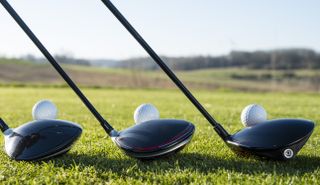
Drivers with weight towards the back of the head will naturally create more loft
Other Things To Consider…
Clubface Adjustability
If you’ve got a driver that offers clubface angle adjustment, changing the face angle can also affect the loft – unless the two work independently. When you open the clubface, you increase the loft and vice versa. So be wary of this when tweaking yours.
Dynamic Loft
Dynamic loft is the actual loft you present to the ball at impact and it can differ greatly to the loft etched on the sole of your driver. There are many factors that affect it. A downward attack angle tends to reduce dynamic loft, as does having the hands excessively ahead of the ball at impact. Remember, dynamic loft affects launch, spin and ultimately distance so have a go on a decent launch monitor to see what yours is.
Impact location
Here’s a fact for you. The loft on your clubface varies from top to bottom by up to six degrees! Loft is at its lowest on the bottom of the clubface and is at its highest on the top. Strikes above the clubface centre will tend to launch higher with less spin and vice versa on shots from low on the clubface.
Our Thoughts
As you now know, there are a lot of factors that you should consider before choosing the loft of your driver and the best way to ensure you make the right choice is to go and get fitted by a PGA professional on a launch monitor. Thanks to some of the best golf drivers , you should have no problem finding one that suits your game.
Joel has worked in the golf industry for over 12 years covering both instruction and more recently equipment. He now oversees all product content here at Golf Monthly, managing a team of talented and passionate writers and presenters in delivering the most thorough and accurate reviews, buying advice, comparisons and deals to help the reader find exactly what they are looking for. So whether it's the latest driver, irons, putter or laser rangefinder, Joel has his finger on the pulse keeping up to date with the latest releases in golf. He is also responsible for all content on irons and golf tech, including distance measuring devices and launch monitors.
One of his career highlights came when covering the 2012 Masters he got to play the sacred Augusta National course on the Monday after the tournament concluded, shooting a respectable 86 with just one par and four birdies. To date, his best ever round of golf is a 5-under 67 back in 2011. He currently plays his golf at Burghley Park Golf Club in Stamford, Lincs, with a handicap index of 3.2.
Joel's current What's In The Bag?
Driver: Titleist TSR3 , 9°
Fairway wood: Titleist TSR3 , 15°
Hybrid: Titleist TSi2 , 18°
Irons: Ping i230 4-UW
Wedges: Titleist Vokey SM8 , 54°. Titleist Vokey SM9 60° lob wedge, K Grind
Putter: Evnroll ER2V
Ball: 2023 Titleist Pro V1x
- Matt Cradock Staff Writer

The World No.2 could be returning to the PGA Tour policy board as a player director once again after stepping down from the role last November
By Joel Kulasingham Published 23 April 24
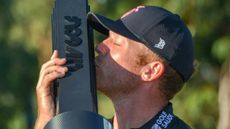
The big-money League resumes and there’s another huge payout on offer for the 54 players in the field
By Mike Hall Published 22 April 24
- Contact Future's experts
- Terms and conditions
- Privacy policy
- Accessibility statement
- Cookies policy
- Advertise with us
Golf Monthly is part of Future plc, an international media group and leading digital publisher. Visit our corporate site . © Future Publishing Limited Quay House, The Ambury, Bath BA1 1UA. All rights reserved. England and Wales company registration number 2008885.

- X (Twitter)
What Driver Loft Should You Use? Everything You Need to Know

A 10.5° golf driver loft is optimal for novices and many players. If you’re new or possess a slower swing, opt for a higher loft driver for better compatibility. Greater loft enhances forgiveness due to its facilitation of an upward attack angle.
Reduced loft facilitates increased distance with decreased spin. Generally, higher swing speeds necessitate less lofted drivers.
I often observe golfers employing improper driver lofts, detrimentally affecting their drives. Driver lofts typically span from 8° to 14°.
To aid visualization, I’ve included a driver loft chart. Thoroughly digesting this article will illuminate the appropriate driver loft as your game progresses.

Note: While you can estimate a suitable driver loft based on your swing speed, individual needs may vary. Hence, I advocate for club fitting. Explore Brendon’s comprehensive club fitting journey at the PGA Tour Superstore.
Which Driver Loft Is Optimal for High Handicappers?
A 10.5-degree loft driver is ideal for high handicappers and novices. This explains why beginner-friendly drivers often feature loft angles of 10.5° or higher.
A higher loft enhances forgiveness and elevates ball trajectory but sacrifices some distance due to increased spin. Given high handicappers’ emphasis on hitting fairways rather than maximizing distance, a 10.5 driver is preferable.
Higher lofted clubs are more forgiving. Hence, hitting a 9-iron is easier than a 4-iron, albeit with lesser distance. I refrain from delving into individual club lofts, focusing solely on driver loft in this article.
If you struggle with drives and suspect your driver loft, aligning it with your swing can enhance performance without necessarily requiring a new shaft.
For high handicappers, I recommend transitioning to a loftier driver.
Options abound if your driver loft proves excessively high for your swing:
- Utilize a driver with an adjustable hosel to moderately decrease loft.
- Consider customization, albeit a costly route.
- Ponder a strong lofted 3-wood with 13 to 13.5 degrees of loft.
While most opt for a 9° or 10.5° driver, experimenting with a 12-degree variant is plausible.

Which Driver Loft Suits Low Handicappers?
Professional golfers and low handicappers typically favor a 9-degree driver loft.
As your golfing prowess evolves, reconsidering your driver loft becomes imperative. Low handicappers aim to maximize driving distance while minimizing spin.
For these players, a 9-degree driver offers low spin, controlled ball flight, and optimal roll.
Conversely, utilizing a high lofted driver with a swift swing speed (exceeding 100 mph) may result in an open-face contact, inducing a slice.
Having faced similar challenges, transitioning from a 10.5 to a 9.5 driver, coupled with extensive driving range sessions, yielded tangible improvements.
It’s crucial to acknowledge that a lower loft driver isn’t universally superior for rapid swing speeds, and there’s no definitive optimal driver loft for distance. While golfers like Bryson DeChambeau opt for a 5-degree lofted driver, many PGA tour players employ a 10.5-degree variant.
I’ve compiled a table showcasing professional golfers’ statistics, underscoring loft’s role in maximizing distance.

Low Lofted vs. High Lofted Drivers
Drivers with 9.5° or lower loft are classified as low lofted, whereas those exceeding 10° belong to the high-lofted category.
High lofted drivers benefit most amateurs by enhancing launch, accuracy, and spin off the tee.
Insufficient loft relative to clubhead speed leads to inadequate carry, distance, and erratic dispersion.
Opting for a lower lofted driver may result in sliced shots, veering towards the right rough. Conversely, higher lofted drivers tend to impart a draw bias, promoting snap hooks.
However, higher lofts coupled with rapid swing speeds generate increased spin, elevating ball flight and yielding a steep descent, thereby impeding roll and total yardage potential.
Who Benefits from a High Lofted Driver?
High-lofted drivers are primarily suited for:
- Novice golfers
- High handicappers
- Golfers with sluggish swing speeds
- Those struggling to launch the ball upward
- Senior golfers
Who Should Utilize a Low Lofted Driver?
Low lofted drivers are typically favored by:
- Golfers boasting swift swing speeds
- Low handicappers seeking greater carry distance
- Individuals grappling with excessive spin
- Golfers experiencing a higher launch angle than desired
Is a Higher Loft Driver Superior?
In my experience, a higher lofted driver proves advantageous for most amateur golfers, facilitating consistent tee shots. However, rapid swingers may generate excessive spin and a ballooned shot, diminishing total distance.
What Loft Should I Opt For With My Driver?
Golfers boasting rapid swing speeds are advised to wield a 9-degree driver or lower. Conversely, moderate swingers should opt for a 10.5-degree driver, while those with sluggish swings are better served with a 12-degree or weaker driver.
Does Reducing Driver Loft Open the Face?
Yes, reducing driver loft indeed opens the clubface angle, as evidenced by Mobile Clubmaker Golf’s demonstration in this YouTube video. Strengthening the loft opens the clubface, whereas weakening it closes the angle, fostering a draw bias setup.

Steve Morgan, is a passionate golfer and the creator of ThrillGolf. Although he isn't nearly a pro, he has more than 10+ years of international coaching and playing experience. His goal is to improve the golfing community's experience in selecting appropriate equipment and determining the best setup for their swing.
Related Posts

Signs of Bad Golf Cart Batteries – Key Indicators to Watch
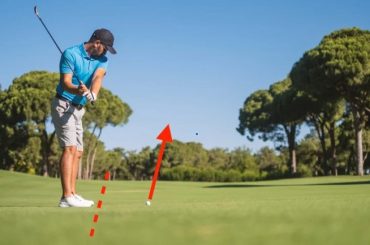
How To Aim Properly And Accurately In Golf?

Mastering the Technique: How to Put Backspin on a Golf Ball

How To Hit A Fade – Strategies For Achieving Controlled Fades

What Loft Driver Should I Use? Everything You Need To Know
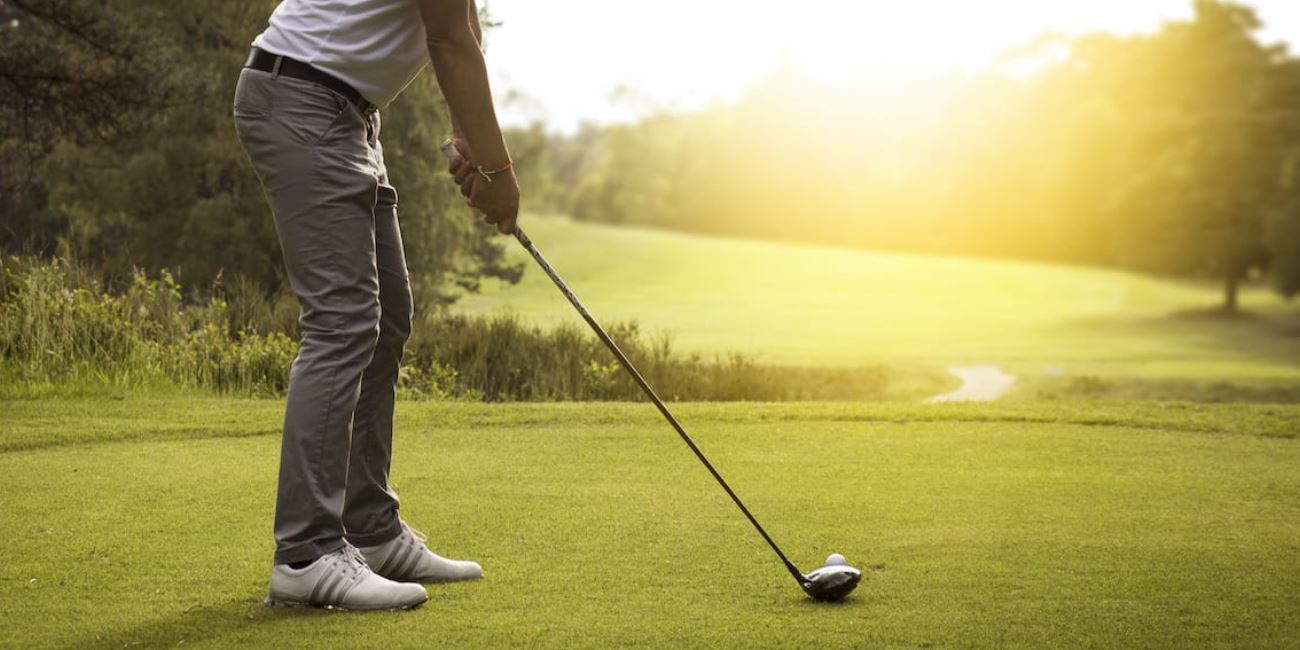
When you purchase a driver, you need to make sure that you are choosing the proper loft for your game. A golf driver with the wrong loft can make it very difficult to get both ball speed and distance from your shots.
With the proper driver loft, you can get the performance you need from a club. Finding that perfect loft can take a bit of time and patience. You may need to work on a few different lofts and do some testing to find the best one.
We have put together some of the most important things to consider when choosing a driver based on the loft.
Introduction To Driver Loft

Starting off in golf as a junior, I was using one of Dads old drivers and needless to say, it was very difficult to get off the ground and when I switched to a proper fitted set of clubs, I improved dramatically off the tee.
Junior golf drivers almost always come with a very high loft. The loft is usually 13 degrees or more. As a young aspiring professional, I always found this a bit too much.
The reason that junior drivers are built with the high loft is to accommodate those with slower swing speeds. However, not all Junior golfers have these lower swing speeds, which is why it is so important to get a driver lofted to you particular needs.
Golfers that are looking for what loft driver they need are going to have to pay more attention to the detailed specifics about their individual game than just choosing an option based on what is available on the market.
As I grew older and my swing speed increased, I also moved from a 12.5 to a 10.5 degree loft in my driver which was a natural progression, that can also happen just by improving your swing mechanics and speed naturally over time.
How Important Is Loft For Your Driver
The loft of your driver is one of the most significant factors to consider when purchasing a club.
If you choose a club with the wrong loft, you will continually struggle with both distance and forgiveness.
How Does It Affect Performance
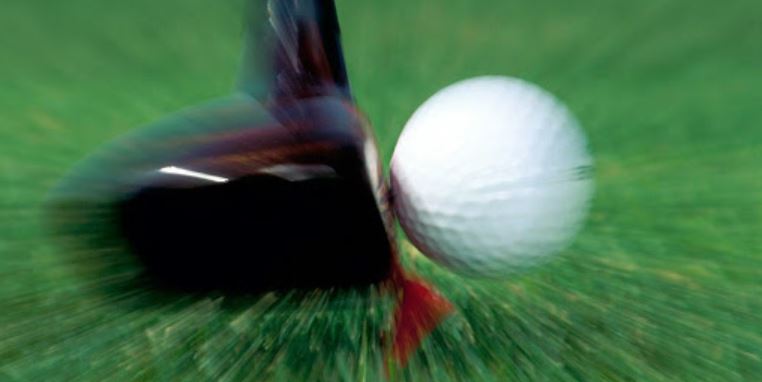
If you play with a driver that is too high lofted for you, then you will miss out on distance.
If you play with a driver that is too low for you then you will also miss out on distance.
The distance is impacted both by drivers that are too low lofted and too high lofted.
This should help to show you how important it is to find that perfect driver loft. In addition to distance, you must also consider forgiveness.
A driver with more forgiveness is going to have a higher loft. Therefore golfers that need forgiveness in their club need to choose something that has plenty of lofts.
What Is The Main Factor That Goes Into Determining What Loft To Use?
The main factor that determines what loft you should be using in your driver is swing speed.
The faster your swing speed, the lower the loft you can play with.
Golfers with high swing speeds have the ability to launch the ball high because of the spin that they create.
If you do not have a high swing speed, you are going to need to keep the loft down, so you don’t hit a ballooned type golf shot.
Slower swing speed players struggle to launch such a lower lofted club, and that is why they do better when given a driver with 13 or more degrees of loft.
Are There Other Factors Besides Swing Speed?

Aside from swing speed, it is also important that golfers pay attention to the natural tendencies of their swing.
Do you have a tendency to hit line drive shots or hit high fly balls?
There are many different types of golf swings and player capabilities. There are options on the market that will work for all players; it just takes a bit of time to find them.
The shaft weight can also impact the height that a golfer can hit the ball.
IF you are struggling with hitting the ball too high and your loft has already been turned down quite a bit, then the best choice could be to put a heavier golf shaft in place or slightly lower your loft.
What Type Of People Should Use A Higher Lofted Driver?
Beginners and higher handicap golfers with slower swing speeds are going to benefit greatly from a higher lofted driver.
It is best to purchase a higher lofted driver that is adjustable. This way, as you improve, you can change the loft on your club to match your swing.
What Type Of People Should Use A Lower Lofted Driver?
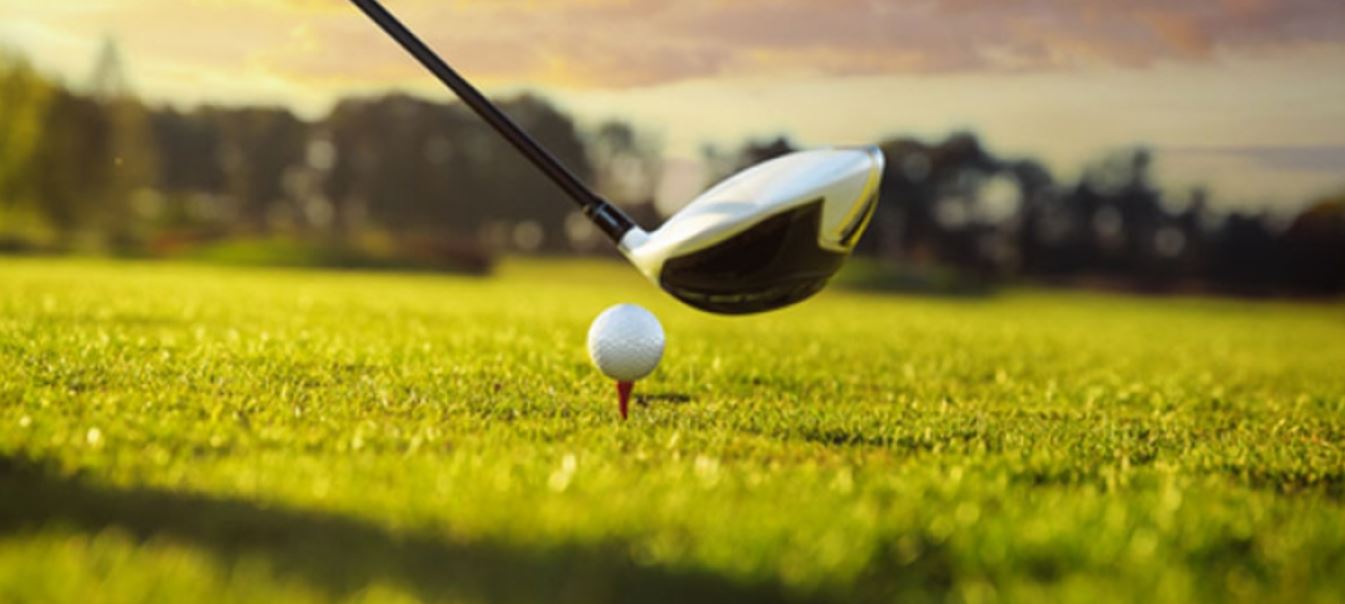
Lower lofted drivers are for the golfer with the fastest swing speeds.
If you swing more than 100mph or more, you are going to need a driver with a lower loft.
Swing Speed Vs. Driver Loft Chart
What driver lofts do the pros use.
Most professionals on the PGA golf tour are using a driver with a loft between 9 and 10.5.
The golfers will change the loft based on the shaft they have on their club and how the shaft impacts the ball flight as well.
Most golfers on the professional circuit have a very fast swing speed. These high swing speeds lead the players to need more decreased driver lofts.
Lowest On Tour
Some golfers on the PGA Tour can get a little extreme when it comes to driver loft. One such player is Bryson Dechambeau.
The loft that Bryson plays with is 5.5 degrees. With 5.5 degrees of loft, it’s amazing the launch that he can still get from his drives.
Most amateurs would never be able to get a 5.5-degree driver off the ground.
What Loft Should Women Use?
Women golfers typically have between 13 and 16 degrees of loft in a stock woman driver.
If a woman golfer has a slower swing speed, this is a perfect amount of loft.
However, for women with faster swing speeds, this may not be enough loft to make it really a good fit.
The faster-swinging women golfers should use something with 12.5 degrees of loft or less.
What About Seniors?
Senior golfers will notice that their swing speed starts to slow down a bit. This is natural and to be expected with senior golfers.
If you notice that your swing is starting to slow down more than usual, it could be time to increase the loft in your driver.
Most senior golfers are going to do best with a loft around 12 to 14 degrees.
This tends to give the best balance of both distance and forgiveness in the club.
What If I Am Hitting The Ball Too High – What Should I Do
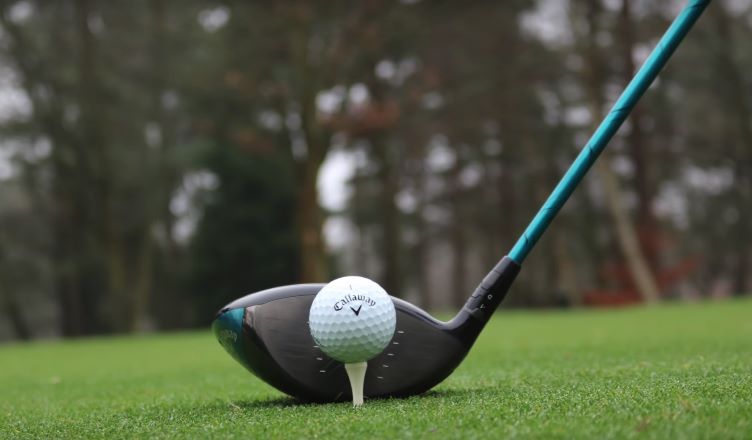
If you find that you are hitting the golf ball too high, it is likely time to look for a driver with a lower loft.
If you don’t want to purchase a new driver, you can sometimes add weight to the golf club or stiffen the golf shaft to be able to hit the ball a bit lower.

What If I Am Hitting The Ball Too Low?
Hitting the golf ball too low can be very frustrating. When the ball is too low, the distance you can get is extremely impacted.
You will end up getting plenty of roll but not enough launch and ball flight. When drivers don’t have enough loft, you may also notice that you can’t get the ball heading to your target the right way either.
Many players tend to hit a slice with a driver that is too low. The best thing to do is to adjust your driver to a higher loft or purchase one that is a better fit for your game.
Can Driver Loft Affect A Hook Or A Slice?
If your driver does not have enough loft, you are going to notice that you have a hard time keeping the ball straight.
The lower lofted drivers are much less forgiving, and those with slower swing speeds often have a hard time hitting them straight.
Sometimes a slice is caused by a player incorrectly swinging at the ball, but it absolutely can be related to the equipment as well.
Does Tee Height Affect Driving Distance?
Lining your golf tee up at the perfect location is very important. If your golf tee is too low or too high, you could miss the sweet spot as you hit your shots.
If you miss the sweet spot, your drives are not going to be nearly as long as they could be.
Always check to make sure that the tee height of the golf ball allows you to hit the drive directly in the center of the golf driver.
Who Should Swap Their Driver For A 3 Wood?
Sometimes golfers continue to struggle with their driver.
It can sometimes mean that you are hitting shots that are too low or too left, but there is just no confidence in these golf shots.
If you have tried with a driver for quite some time and have had no results, the 3 wood may be a better choice.
Although you will lose a bit of distance switching to a 3 wood, the results are going to be well worth it.
What’s The Best Way To Ensure Correct Loft In Your Driver?
The best thing a golfer can do when it comes to choosing a driver based on loft is to choose an adjustable loft.
Adjustable loft makes it much easier to change your loft and adjust as necessary.
You may find that you are playing great at 11.5 for a while and then notice that your game really needs 10.5.
This adjustable driver gives you that option without having to replace your driver.
Best Driver – Mini Reviews With Pros And Cons
Best choice: callaway mavrik driver.
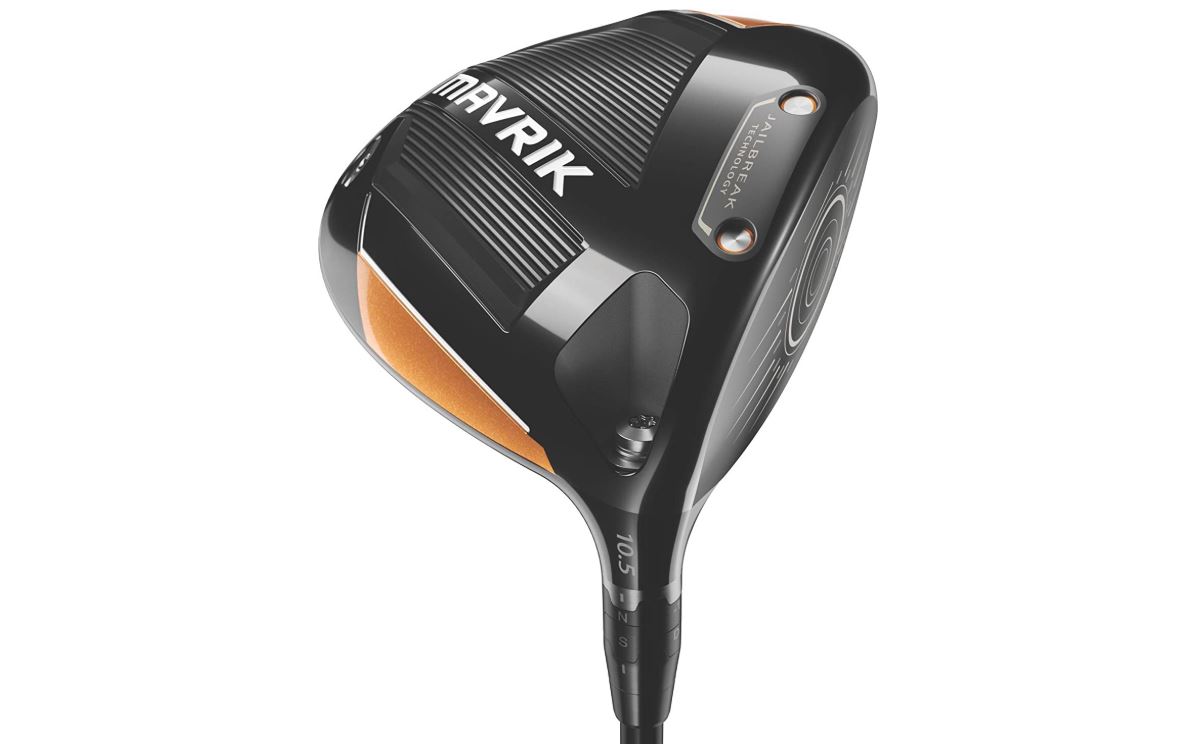
The Callaway Mavrik Driver is one of the best choices on the market for loft adjustability.
You can set the Mavrik to work for your individual needs for your game and get the results you need.
We love that the Mavrik is so naturally long and has an excellent feel when you hit it.
- One of the faster clubs faces in golf
- Easy to launch
- Long-distance and adjustability
- Tinny sound at impact sometimes
Overall Score: 96/100
Check out more reviews here:.
Best For Slow Swingers: Cobra Speedback Driver

The Cobra Speedback driver is highly adjustable and built for speed.
If you are a golfer that struggles to get the ball in the air and to hit it a long distance, the Speedback is going to be a very smart choice.
This driver has drooped in price through the years and now comes at a very fair value.
- Good pricing
- It helps slower swing speed players get distance
- The adjustability range is wide
- Not as long as the Speedzone when perfect contact is made
Overall Score: 95/100
Best for fast swingers: taylormade sim 2 max.
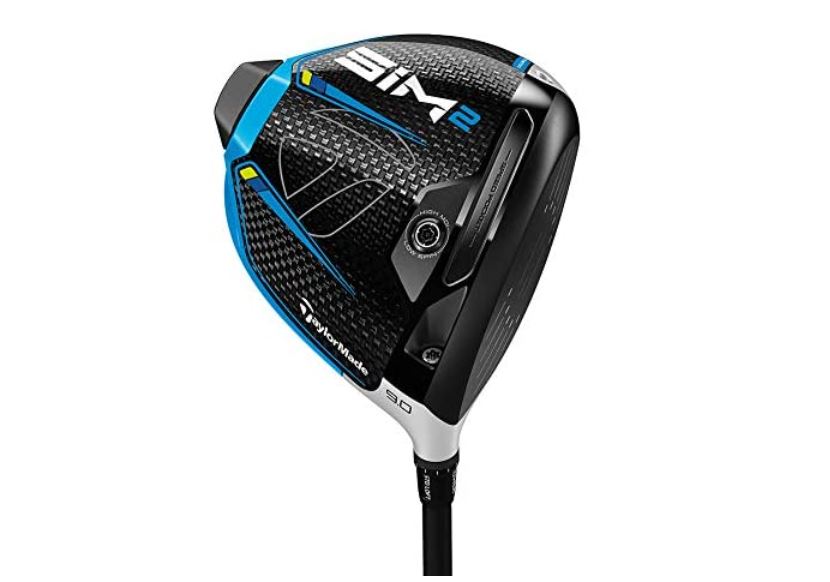
The TaylorMade SIM 2 Max is going to be a very fast and forgiving driver.
This driver is built for speed, and those with the fast swing speeds will love the results that they can get with this club.
The SIM 2 Max driver is a high speed and easy to adjust for the proper loft.
- Long distance
- High ball speeds
- High priced new club
Overall Score: 98/100
As you can see, driver loft is a very important factor when you are choosing a golf club. If you choose a driver loft that is not right for your game, you will struggle with distance, launch, and forgiveness.
The higher you can launch the ball and send it down the fairway, the longer you are going to be able to hit the ball. For most players, this ideal loft is going to be around 10.5 degrees.
However, if your swing speed or player profile is not in the average range, you need to consider both higher and lower lofted golf driver loft options.

Hi, I am Matthew, a mid handicap golfer who likes to play as much as possible. I love trying out new gear and this blog is where you can find all the gear I have tested over the years!
Share this post:
© 2024 Amazon Associates Program. Southampton Golf Club is a participant in the Amazon Services LLC Associates Program, an affiliate advertising program designed to provide a means for sites to earn advertising fees by advertising and linking to Amazon.com. *Amazon and the Amazon logo are trademarks of Amazon.com, Inc., or its affiliates.
Product Reviews
- The Garmin S62 vs The S60 – There Is A New Sheriff In Town
- Nikon Coolshot Rangefinder Review
- FORB Home Golf Putting Mat Review
- Garmin Approach S60 Premium GPS Golf Watch Review
- Putt-A-Bout Indoor Putting Green Review
- All Golf Equipment Reviews
- Privacy Policy
TOP 10 LINKS
- Best Beginner Golf Club Sets 2023 – The Ultimate Golfing Resource
- Best Golf Rangefinders 2023 – For Pin Seeking Golfers
- Top 15 Best Golf Gadgets 2023
- Best Golf Push Carts 2023 – Navigate The Course With Ease
- Best Golf Travel Bags 2023 – Arrive In Club Protecting Style
- All Golf Top 10 Best Product Lists
Golf Buying Guides
- Definitive Buying Guide For Golf Balls
- Golf GPS Watch Buying Guide
- Definitive Guide To Golf Rangefinders
- Ultimate Golf Gifts Buying Guide For 2023
- Golf Bag Buying Guide
- Golf Club Shaft Flex Guide

- Skip to primary navigation
- Skip to main content
- Skip to primary sidebar
- Skip to footer
Golf Cart Report
#1 Rated Golf Cart Consumer Guide
What Loft Driver Do Pros Use? (Everything To Know)
May 19, 2021 by Brittany Olizarowicz Leave a Comment

Professional golfers are very picky about the equipment that they use in their games.
When you consider the amount of money that they have on the line, this should come as no surprise.
One of these considerations that is quite important is the loft of the driver.
With the loft of the driver changing, golfers can get varying ball flights and fine tune them to work for their golf game.
The general thought is that professional golfers use a very low loft on their drivers, but this is not always the case.
What Loft Driver Do Pros Use?

Professional golfers tend to play with a driver that has about 9.5 degrees of loft.
Of course, there are some golfers who find 10.5 or 8.5 to be more effective, but you will generally see most players end up in the 9 to 9.5 range.
The loft on the driver makes it easier to launch.
However, most players who are on professional golf tours do not need much help learning to launch the ball high.
The ultimate goal of these players is to try and get the most distance.
Distance requires a great combination of factors in order to maximize it.
Players need to make sure that their drives are not going too high or too low.
There are some general misconceptions about the driver lofts that we see on the PGA Tour.
Many players believe that hitting a driver low is going to help it cut through the air and get more distance.
This is really not the case.
Let’s look at some of the things you should know about loft before choosing a driver.
These are all things that the professionals must consider when they choose which clubs to put in their golf bags.
How Does Loft Help A Driver Go Further?

When you think about the ball cutting through the air, you may consider that a line drive-type ball flight will be the best way to get this done.
Those flights always seem to be more powerful and take a more direct line to the target.
Although this is partially true, it is also important to consider that the longer a golf ball stays in the air, the further it is going to go.
Golf balls that stay in the air for a long time are going to travel further.
This means that in addition to the speed at which the ball is hit, the flight of the shot is also going to make a difference.
Essentially, a driver needs to travel a bit higher with an arc to stay in the air as long as possible.
Golfers who were playing the game with drivers that have 6- and 7-degree lofts have since changed to the 9- and 10-degree options.
They now realize that the ball spending a bit more time in the air is going to translate directly into more distance.
Golfers who want to hit the ball a long way should seriously consider what loft they are getting in their driver.
If you make a mistake with this choice, you will typically have a hard time getting this driver to work for your game.
The slower swing speed golfer who tends to struggle with distance may need a driver with a bit of extra loft.
These players are the ones who struggle to get the ball in the air at all, and obviously, that will decrease their distance altogether.
Loft makes a driver more forgiving, and the higher your handicap is, the better you will likely do with a higher lofted driver.
What Loft Does Bryson DeChambeau Use?
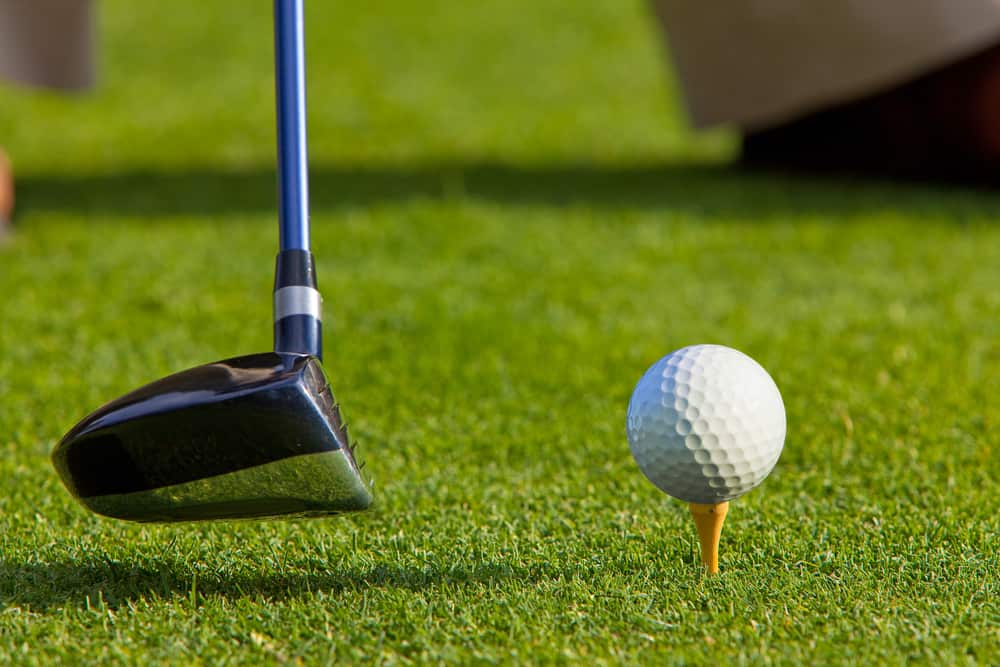
Bryson DeChambeau has made quite a name for himself on the PGA Tour in the last few years.
Bryson is known for his incredible power and distance.
When you watch Bryson swing, it is a bit different than watching other professional golfers.
He goes after the ball with a much different force, and indeed, he looks like one of those long drive champions when he goes after his shots.
The loft that Bryson uses on his driver is only 7.5 degrees.
He is very invested in science and stats and has done quite a bit of research to figure out which loft is the best fit for his game.
Having a club with only 7.5 degrees of loft can take a bit of getting used to, but it seems to work for Bryson.
There are some recent studies that have been done that are starting to question how efficient Bryson’s swing really is.
Although he has a lot of power, is that power effectively converting to yardage for him?
The results are pretty interesting, and they are showing that the effort that Bryson puts into his shots may not be all that effective.
Only time will tell if he decides to ease up a bit and actually ends up seeing some extra distance.
Until then, we are going to see Bryson going after the ball with a very low lofted driver.
How Do I Know What Loft My Driver Should Be?
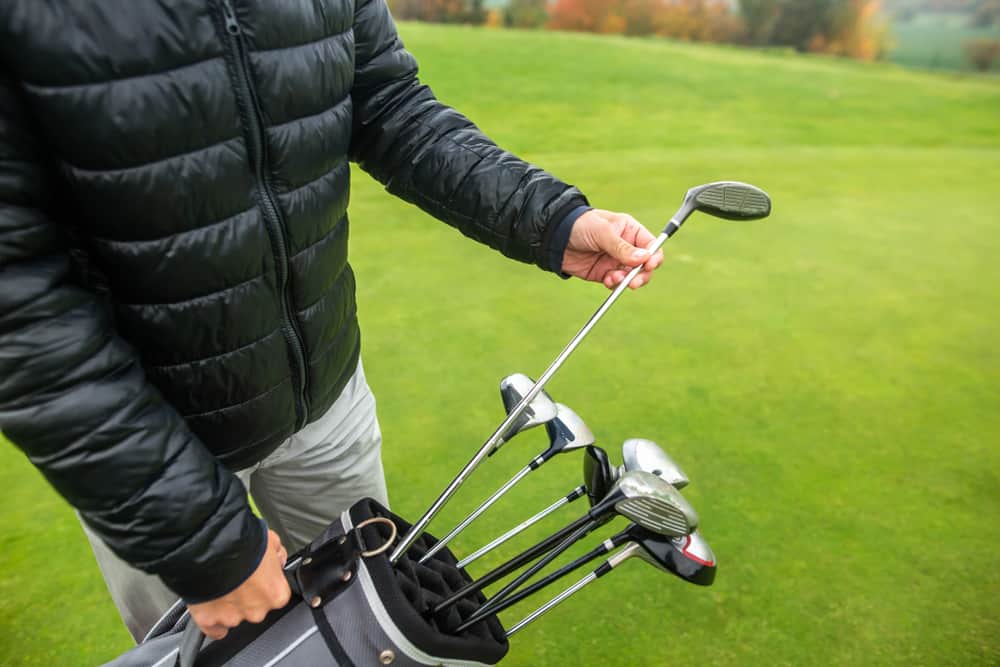
Now that you have a better understanding of the lofts that the professionals are using, you may be wondering how this applies to your game.
Should you play with a driver that is the same loft as the pros?
Many golfers have a custom club fitting done to help them determine which loft they should be using on their driver.
The club fitting consists of hitting shots with the help of a launch monitor to determine if the driver you are swinging with is properly fitted to your needs.
Most average golfers are going to find that 10.5 degrees of loft is the best fit for their game.
With a 10.5-degree driver, you will get a good mix of distance, forgiveness, and ball flight.
If you are undecided about the driver loft that is best for you, then it may be worth looking into an adjustable driver.
The adjustable drivers can save you some money and hassle from having to purchase a new one each time your swing goes through a slight change.
If you are hitting your golf driver straight, getting plenty of ball flight, and seeing great distances, then you don’t need to worry if the club is lofted exactly to your needs.
If, however, you are slicing shots, occasionally popping them up, or hitting golf balls that never come off the ground, then you need to look into updating your driver.
Remember that in addition to the loft of the club, you need to pay attention to things like the weight of the shaft as well.
A heavy golf shaft will typically lower the ball flight.
Lightweight golf shafts make it easier for golfers to get plenty of distance and launch as well.
If you decide to go with a high lofted driver, you should make sure that the shaft that you are using is not extremely lightweight as it could end up making you hit the driver too high.
Are Adjustable Drivers Worth It?
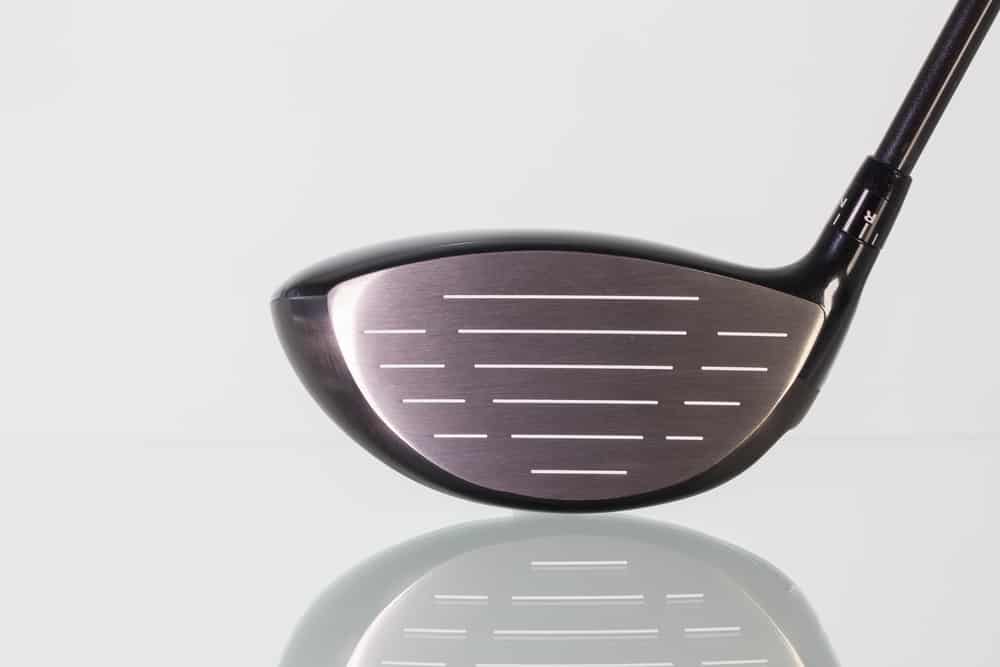
Now that you know the importance of the loft of the driver, you may be starting to wonder if adjustable drivers are a good idea.
Having the ability to change the loft on your driver whenever your game needs it is very important.
Adjustable drivers give people the opportunity to change the loft or lie depending on the course they are playing and what works for their needs.
Adjustable drivers usually can be changed by around 2 to 4 degrees in loft.
This is more than enough to accommodate a player and the lofts that they may need.
Adjustable golf drivers are often available for the same price as a traditional driver.
This leads many golfers to question why all golf drivers aren’t made with adjustable technology.
The reason behind this is mainly related to the weight and sometimes the pricing of the driver.
For the really inexpensive golf drivers, adding the adjustability is going to be quite expensive.
For other companies, like Cleveland Golf, for example, the adjustable golf drivers are too heavy.
All of those adjustable hosels make it difficult for the club to be as lightweight.
When you go back to the traditional hosel, it saves a lot of weight and can make it easier for golfers to get club head speed.
Overall, we believe that adjustable drivers are worth the money you pay for them.
What Loft Driver Does Dustin Johnson Use?
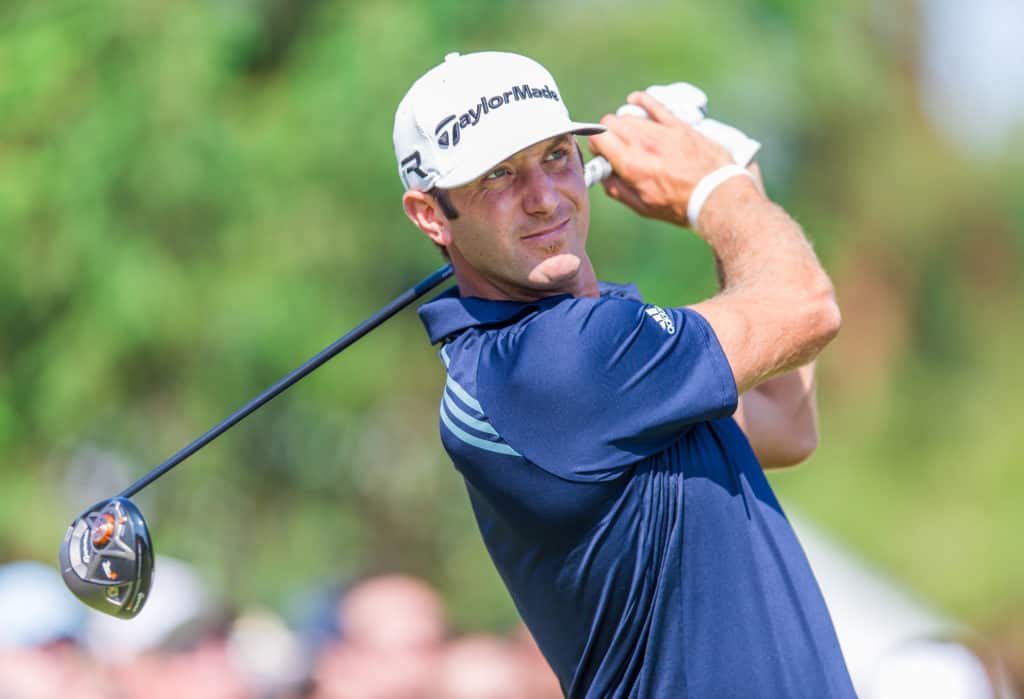
Dustin Johnson is a fun golfer to watch because he is so tall and has so much natural power that, when he makes contact with the ball, it seems to fly forever.
Johnson is one of the longer driving golfers on tour, and he is also a fan favorite.
We love to watch Dustin play and see all that he has accomplished with this game.
Many players want to be just like Dustin because of his ability to hit long and effortless drives.
With a player like Dustin, you would expect that the loft on his driver was closer to 9 degrees.
Having this much club head speed is undoubtedly a great feature and should be utilized.
Interestingly enough, Dustin Johnson is best known for playing a 10.5-degree driver.
The exciting thing about this is that many amateur golfers can play with the same loft that Dustin is using to win all of these events.
Certainly, going to a slightly higher lofted driver has not cost Johnson any yardage in his last few events.
What Loft Driver Does Tiger Woods Use?

Even though Tiger is not playing currently, the most recent driver that he had in his bag had 9 degrees of loft.
We all know Tiger as being one of the longest driving and most consistent golfers on tour.
There is no question that he generates enough clubhead speed to hit with almost any driver that he would like.
Nine degrees is hard for a slower swinging amateur golfer to be consistent with.
However, we all know that Tiger has speed that most of us will never see in our lifetimes.
Hopefully, when he comes back to golf, he will be able to use a driver like this again.
To ease back into the game, you may see Tiger using a driver with a little more loft and then eventually drop it back down to where it used to be.
Are Higher Lofted Drivers More Forgiving?
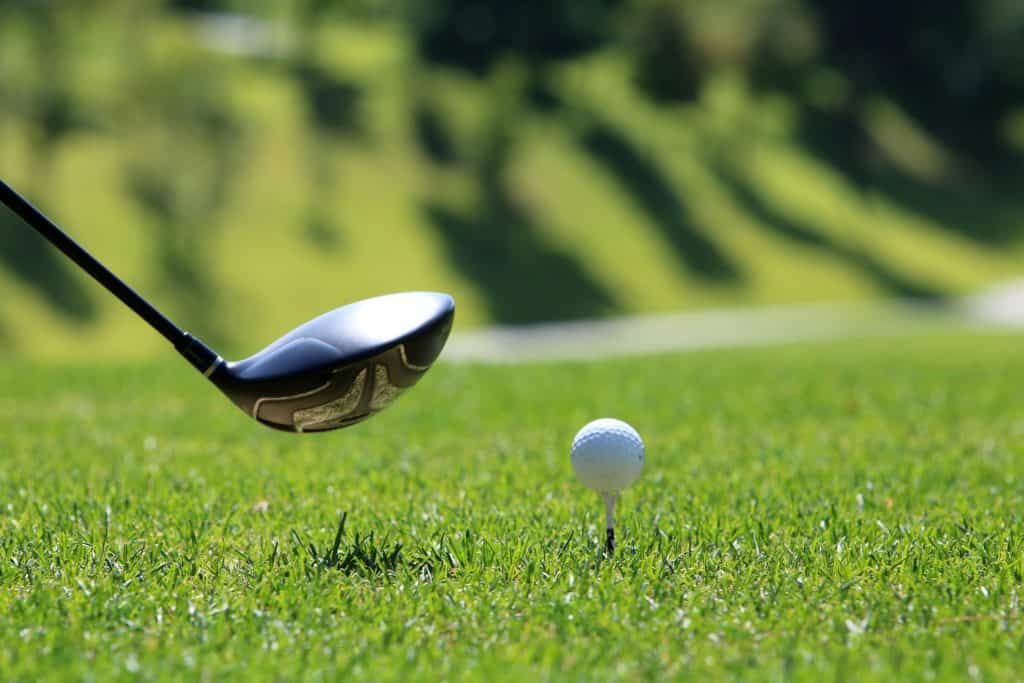
The higher lofted driver is more forgiving, and this is a major consideration that players need to make when they choose their clubs.
The higher lofted drivers give golfers with severe slices or hooks quite a bit more forgiveness on their shots.
With a higher lofted driver in your hand, you will likely have no trouble straightening out your shots.
However, you will reach that point in your game where the loft on the driver is actually a bit too much, and you need to get the ball flight evened out.
Finding that exact point is going to take a bit of time and experimentation.
When you find a driver with specifications that work well for your game, ensure that you remember those specs and continue to use them for years to come.
Sometimes the professionals give us a good indication of the best equipment on the market.
Other times, we should only use what they say as a guide and make decisions based on the needs of our own golf game.
When it comes to driver loft, we highly recommend choosing something that matches your game as opposed to matching the game of a professional.
Just because Bryson DeChambeau uses a certain club, it does not necessarily mean that this club would be the right choice for you.
Make some smart decisions when it comes to the loft of your driver, and you will likely have that club for years.
Related Posts

About Brittany Olizarowicz
Britt Olizarowicz started playing golf at the age of 7. She played Division 1 College golf at St.Johns University, where she won two tournaments at the collegiate level. After college Britt went on to become a Class A PGA Professional. Her love for the game spans almost her entire life. Today Britt loves sharing her knowledge of golf through her writing. After all, to teach the game of golf, you must first have a love for it.
Reader Interactions
Leave a reply cancel reply.
Your email address will not be published. Required fields are marked *
Important Info
Safety Disclaimer
Privacy Policy

Instruction
How adjusting your driver loft changes your ball flight.
One of the most confusing things I see after a Demo Day is a shiny new adjustable driver in someone’s bag — set on the standard setting.
Many golfers do indeed fit into a standard setting, but the majority of golfers I teach on a daily basis do not . If you were just fit for a driver at your Demo Day, why would you not adjust it as the fitter recommended? You’re losing distance! The good news is that you can add yards with the turn of a wrench.
Two-time Golf Digest “Top 100 Clubfitter” Scott Felix, who works out of Spring Creek Ranch in Collierville, Tenn., has this to say:
[quote_box_center]“The adjustability of these clubs has made it possible to fit every swing that you make, but not moving your new driver into the correct settings after your fitting wastes 100 percent of your time and money!”[/quote_box_center]
With that said, I would like to show you how your launch monitor numbers can change when you adjust the loft of your driver. Also keep in mind that there are a slew of other adjustments made possible with modern drivers, such as lie angle settings, and “sliding” or moveable weights that can tune center of gravity location. They can make even more of an impact on your launch conditions.
At 8.5 degrees
- Swing Speed: 108.5 mph
- Ball Speed: 155.3 mph
- Smash: 1.43
- Spin Rate: 2282 rpm
- Launch Angle: 11.7 degrees
- Carry: 250.6 yards
- Total: 278.5 yards
- Landing Angle: 34.3 degrees
- Height: 83.1 feet
At 9.5 degrees
- Swing Speed: 104.1 mph
- Ball Speed: 153.9 mph
- Smash: 1.48
- Spin Rate: 2509 rpm
- Launch Angle: 15.5 degrees
- Carry: 253.6 yards
- Total: 275.6 yards
- Landing Angle: 40.4 degrees
- Height: 108.5 feet
At 11 degrees
- Swing Speed: 105 mph
- Ball Speed: 152.5 mph
- Smash: 1.45
- Spin Rate: 3415 rpm
- Launch Angle: 17.3 degrees
- Carry: 249.3 yards
- Total: 260.6 yards
- Landing Angle: 49.5 degrees
- Height: 147.3.1 feet
In all three swings, the ball speed is roughly 153-155 mph, which shows that regardless of the loft, ball speeds won’t change much when using the same club head. The ball speed may change, however, when a player manipulates his swing due to the “look” of different lofts, which can cause them to hit shots in different areas of the face.
Generally, as loft goes up, so does the spin rate, as you can see in the data.
- My shot with the driver adjusted to 8.5 degrees of loft had 2282 rpm of spin.
- With the driver adjusted to 9.5 degrees of loft, my shot had 2509 rpm of spin.
- With the driver adjusted to 11 degrees of loft, my shot had 3415 rpm of spin.
More loft will not always lead to more spin, due to things such as impact points, spin lofts, face-to-path relationships, and the ball you play — but it is a good general rule of thumb. Many golfers are obsessed with lowering their spin, but remember that low spin is not great for everyone. Golfers must have enough spin to support their ball speed. For this reason, golfers can have issues with both too much or too little spin.
Below is a chart from Trackman that can help golfers maximize their total distance based on their swing speed and angle of attack. If you’re looking to maximize carry distance, you can view those charts here .

With the angle of attack being constant, the more loft you pre-set statically at address, the more loft you will have on the club at impact. More loft is great for golfers who produce slower ball speeds and less spin, as they need more loft to launch the ball higher so it stays in the air longer. More loft is also good for players who have too much “handle drag” into impact, necessitating the added static loft at address to offset this tendency through impact.
For the high-spin player, lowering the loft will reduce your spin. But be careful, as it also makes something called the “D-plane” easier to tilt, causing more aggressive offline shots. The key is to find the happy medium.
Related: Understanding the D-Plane.
In the test above, each ball carries a similar distance, but the behavior of the shots once they land are drastically different, which is due to landing angle. The flatter the landing angle, the more the ball will run out when hitting the ground.
- The 8.5-degree loft produced a landing angle of 34.3 degrees .
- The 9.5-degree loft produced a landing angle of 40.4 degrees .
- The 11-degree loft produced a landing angle of 49.5 degrees .
As you can see, landing angle has a great influence on “roll out.” With all things equal, the slower the club head speed, the flatter the ball will need to land in order to produce max distance.
Personally, my best fitting was with the lower-lofted driver for the ideal compromise between my mechanics and the actions of my club head. I also tend to hit “up” on the ball more than most, so the lower loft flattens my ball flight and helps me to create the correct launch conditions. However, if my mechanics improved through impact and I didn’t hit up as much, then I WOULD need to re-fit the static loft on my club. Thankfully, most players’ mechanics don’t make drastic changes, so having a static-lofted driver that is in the “middle” of your trends will offer you three clubs in one (provided your impact mechanics remain constant).
I love drivers with adjustability because they give players the freedom to choose a driver setting that’s right for their swing and playing conditions. Adjustability is a weapon. Just don’t forget to use it!

Revisiting Ernest Jones’ “Swing the Clubhead”
How The Body Affects The Golf Swing: It’s all in the hips
Tom F. Stickney II, is a specialist in Biomechanics for Golf, Physiology, and 3d Motion Analysis. He has a degree in Exercise and Fitness and has been a Director of Instruction for almost 30 years at resorts and clubs such as- The Four Seasons Punta Mita, BIGHORN Golf Club, The Club at Cordillera, The Promontory Club, and the Sandestin Golf and Beach Resort. His past and present instructional awards include the following: Golf Magazine Top 100 Teacher, Golf Digest Top 50 International Instructor, Golf Tips Top 25 Instructor, Best in State (Florida, Colorado, and California,) Top 20 Teachers Under 40, Best Young Teachers and many more. Tom is a Trackman University Master/Partner, a distinction held by less than 25 people in the world. Tom is TPI Certified- Level 1, Golf Level 2, Level 2- Power, and Level 2- Fitness and believes that you cannot reach your maximum potential as a player with out some focus on your physiology. You can reach him at [email protected] and he welcomes any questions you may have.
30 Comments
May 5, 2015 at 10:57 am
THIS ARTICLE IS JUNK!! your welcome
May 5, 2015 at 1:20 am
A 10 degree loft with a neutral face gets the job done for most. Adjustable drivers, by and for mad scientists.
May 3, 2015 at 6:45 pm
Why is Trac-Man data looked at as 100% accurate? I would love to see an article where they show Trac-Man data AND ACTUAL on range measured data,,,,,,,,
Come on Golfwrx !!! let see it!!! Buck the system and do it!!! take the TOP 3 or 5 drivers, same golf ball, 3 different handicap players and go for it!! measure it with the Trac-Man AND old fashioned tape and display the differences in theory flight and actual flight,,,,,,,,,,,,,
Apr 28, 2015 at 8:36 pm
Am I the only one that is surprised by the amount of rollout figured into the charts? 50 yds with the 105 SS seems a tad high IMHO.
Double Mocha Man
Apr 29, 2015 at 12:31 am
We’re talking the Mojave Desert here during a drought.
Apr 30, 2015 at 8:03 pm
No it struck me as odd as well. At least on the courses we play here in the Northeast, those roll out numbers would be unusual unless you hit a knuckleball
Apr 28, 2015 at 3:55 pm
That’s great info if you have a launch monitor. I don’t have access to one. How do you suggest analyzing the proper loft for a player who can only go hit balls at the range? With my driver, I can’t determine which drives are further for me within 10 yards. I’ve always been a big believer that the right shaft and settings on my driver will make a big difference, but I’ve never understood how to analyze the results from a driving range.
Apr 28, 2015 at 1:33 pm
Speaking about my swing only A high ball is a far ball ss about 115 mph
Apr 28, 2015 at 11:59 am
Right out of the gates this is a flawed experiment. You’re using similar ball speeds to try and normalize your data but given the fact that the club head speeds have changed, it means that the strikes are much different. Whether the ball is struck off the heel vs. toe vs. center will make a huge difference in spin and launch angle.
I think you need to have very similar club head speed and ball speed to make this experiment more accurate otherwise you’re comparing apples and oranges.
Apr 28, 2015 at 10:34 am
I have an R1 which I’ve tinkered with and have used with various settings at different times. However I keep coming back to the same issue – one that I think plagues most mid-high handicaps – the lack of a consistently repeatable swing. One week one setting will be better, then the next week, another. I guess the best way to do it is to get fit when you’re swinging your best and then just leave it alone when your not (i.e. stop tinkering), but there’s no guarantee that you’ll be having a good driving day when you’re fit… in fact, statistics say you probably won’t. First world problems I guess.
Apr 28, 2015 at 8:41 am
I would have isolated smash factors with in 0.01 of each other. At least this way you know the strikes were similar. Clearly the first and last were influenced greatly by not having as good as strike as the middle one.
0.03 on 108 mph is 3.24 mph ball speed. That is a big chunk of power missing.
Decent test, needs to try to isolate more variables out.
Apr 28, 2015 at 3:07 am
Not sure I understand why clubhead speed varied with different lofts. Would make more sense if CS remained constant and BS varied. Can anyone explain?
Apr 28, 2015 at 11:22 am
I’m interested in this one too. Judging from the numbers, he swung it faster while hitting the 8.5 but not as solid (hence lower smash), resulting in only slightly higher ball-speed. Why would a different loft make you swing faster?
May 23, 2015 at 2:18 pm
Players swing differently based on perception of loft. Your brain gets in the way if you see something that’s out of your comfort zone and a compensation is made.
Launch angle, spin rate, smash factor will vary significantly based on where the ball impacts the club face. Thin = lower launch & higher spin. Higher on club face = higher launch & lower spin.
Loft also affects potential smash factor. It goes down as loft increases.
Apr 28, 2015 at 1:47 am
Very good article. I’ve seen that same Trackman chart in both this Tom Stickney article and also in a Tom Wishon article. Both do a great job of conveying information. One thing I’ve noticed is that Trackman must account for “roll out” using a very smooth surface fairway, such as what the pros play on. I play on public courses, and usually the fairway is something akin to Kentucky Bluegrass, not Bent or Bermuda or whatever the pros play. I’ve walked a couple of pro tournaments, and the fairways feel like a soft living room carpet, so it is no wonder that Trackman is showing 50 yards of “roll out”. It doesn’t feel like there are any blades of grass unless one gets off the fairway. For many of us, that simply isn’t applicable, as the ball catches up in the public course fairway’s blades of grass and slows down far more quickly than Trackman stats would indicate. In those cases, it may be wise to measure your own actual drives on your home course with a GPS or whatever rather than a Trackman simulator. A slightly higher loft for further carry may be better for some, since the ball isn’t going to roll out 50 yards as far as Trackman states. So besides what Trackman lists, one should also consider what sort of fairway one is playing.
Marty Neighbour
Apr 27, 2015 at 5:37 pm
I recall an article by Tom Wishon that stated
“I believe that it is simply not possible to change the loft through a hosel device which operates on the principle of changing the angle of the shaft into the clubhead. ”
http://wishongolf.com/wp-content/uploads/2013/04/adjustable-hosel-drivers.pdf
Apr 27, 2015 at 7:43 pm
That guy also says a lot of things that are off.
Apr 27, 2015 at 10:14 pm
Like which?
Apr 27, 2015 at 10:01 pm
The most important point in Tom Wishons article you linked is about squaring the clubface up at address vs. soling the club at address. Visualize that and you should be able to get Tom’s point. He’s one of the most experienced club makers/designers in the world.
Apr 27, 2015 at 10:15 pm
Apr 27, 2015 at 11:07 pm
Marty: Tom Wishon did indeed write that, and he was right. If you read everything Tom wrote, you’d understand it; and you’d also understand that effective loft is indeed changed by modern hosel-adjustment systems, and that in fact Wishon’s valuable design theory is not at odds with Tom Stickney’s valuable (and equally valid) advice in this column. Don’t think that “nothing” is changed via hosel adjustments. Certainly Tom Wishon wouldn’t say that. He was simply pointing out that when a driver head is a solid cast geometric thing, you don’t change loft alone by moving the shaft angle (via the hosel). But Wishon would never say that “nothing” is changed. And by the way, you can skip the entire issue of hosel adjustment entirely, and pretend that Stickney is writing about drivers (of different lofts) that aren’t adjustable at all. It’s not like we haven’t had choices in driver lofts for 20 years+, going back to way before adjustable hosel designs.
I am going to print these tables for my own equipment library. I might not live or die by them personally (my eye prefers a little lower trajectory, and I’ve been aware for several years of the issue with angle of descent); but they will be a big help when time on a good monitor is so valuable for someone like me.
Apr 30, 2015 at 8:10 pm
I’ve read the article several times and it always comes up. But for me , personally, on the courses I play, changing the loft adjustment with certain models (eg: Taylor Made) can produce a dramatic effect. Not saying Tom’s reasoning is wrong, but for me the adjustments work
May 23, 2015 at 2:25 pm
Always remember that Tom Wishon SELLS golf clubs with fixed hosels. When he calls into question clubs by major manufacturers, he’s promoting his own product. I find it difficult to determine true intentions when there’s a financial motive to be found… That’s not a vote for major OEMs, just that Wishon is also an equipment salesman.
Apr 27, 2015 at 4:26 pm
Looking at total distance vs swingspeed, isn’t the 9.5 the best? The 8.5 was swung 4.4 mph faster with little yardage gain relative to the swingspeed difference.
Apr 27, 2015 at 4:22 pm
Great article. Now I just need some time with a launch monitor.
Apr 27, 2015 at 4:16 pm
Does adjusting lift affect “offset?” When I lower the loft in my SLDR the face appears more closed at setup and I hit lower draws/hooks. When I ‘loft up’ my ball balloons. I have my SLDR AT all standard/neutral setting and it seems to work best for my inside out path. Also, do you know the “higher” and “lower” settings mean in the SLDR hosel?
Apr 27, 2015 at 4:27 pm
Seth, I think you’ve got it backwards. Lowering the loft via the hosel on the SLDR opens the face. Making the loft higher closes the face.
Apr 27, 2015 at 5:15 pm
The SLDR is adjustable 1.5 degrees in either direction. There fore higher means most loft/most closed. The Lower setting is most open/ most fade. Each notch is .5 degrees.
Apr 28, 2015 at 8:47 am
might want to double check that you don’t have a LH sleeve on a RH club or vise versa.
Your email address will not be published. Required fields are marked *
This site uses Akismet to reduce spam. Learn how your comment data is processed .

You may like
The wedge guy: the easiest-to-learn golf basic.
My golf learning began with this simple fact – if you don’t have a fundamentally sound hold on the golf club, it is practically impossible for your body to execute a fundamentally sound golf swing. I’m still a big believer that the golf swing is much easier to execute if you begin with the proper hold on the club.
As you might imagine, I come into contact with hundreds of golfers of all skill levels. And it is very rare to see a good player with a bad hold on the golf club. There are some exceptions, for sure, but they are very few and very far between, and they typically have beat so many balls with their poor grip that they’ve found a way to work around it.
The reality of biophysics is that the body moves only in certain ways – and the particulars of the way you hold the golf club can totally prevent a sound swing motion that allows the club to release properly through the impact zone. The wonderful thing is that anyone can learn how to put a fundamentally sound hold on the golf club, and you can practice it anywhere your hands are not otherwise engaged, like watching TV or just sitting and relaxing.
Whether you prefer an overlap, interlock or full-finger (not baseball!) grip on the club, the same fundamentals apply. Here are the major grip faults I see most often, in the order of the frequency:
Mis-aligned hands
By this I mean that the palms of the two hands are not parallel to each other. Too many golfers have a weak left hand and strong right, or vice versa. The easiest way to learn how to hold the club with your palms aligned properly is to grip a plain wooden ruler or yardstick. It forces the hands to align properly and shows you how that feels. If you grip and re-grip a yardstick several times, then grip a club, you’ll see that the learning curve is almost immediate.
The position of the grip in the upper/left hand
I also observe many golfers who have the butt of the grip too far into the heel pad of the upper hand (the left hand for right-handed players). It’s amazing how much easier it is to release the club through the ball if even 1/4-1/2″ of the butt is beyond the left heel pad. Try this yourself to see what I mean. Swing the club freely with just your left hand and notice the difference in its release from when you hold it at the end of the grip, versus gripping down even a half inch.
To help you really understand how this works, go to the range and hit shots with your five-iron gripped down a full inch to make the club the same length as your seven-iron. You will probably see an amazing shot shape difference, and likely not see as much distance loss as you would expect.
Too much lower (right) hand on the club
It seems like almost all golfers of 8-10 handicap or higher have the club too far into the palm of the lower hand, because that feels “good” if you are trying to control the path of the clubhead to the ball. But the golf swing is not an effort to hit at the ball – it is a swing of the club. The proper hold on the club has the grip underneath the pad at the base of the fingers. This will likely feel “weak” to you — like you cannot control the club like that. EXACTLY. You should not be trying to control the club with your lower/master hand.
Gripping too tightly
Nearly all golfers hold the club too tightly, which tenses up the forearms and prevents a proper release of the club through impact. In order for the club to move back and through properly, you must feel that the club is controlled by the last three fingers of the upper hand, and the middle two fingers of the lower hand. If you engage your thumbs and forefingers in “holding” the club, the result will almost always be a grip that is too tight. Try this for yourself. Hold the club in your upper hand only, and squeeze firmly with just the last three fingers, with the forefinger and thumb off the club entirely. You have good control, but your forearms are not tense. Then begin to squeeze down with your thumb and forefinger and observe the tensing of the entire forearm. This is the way we are made, so the key to preventing tenseness in the arms is to hold the club very lightly with the “pinchers” — the thumbs and forefingers.
So, those are what I believe are the four fundamentals of a good grip. Anyone can learn them in their home or office very quickly. There is no easier way to improve your ball striking consistency and add distance than giving more attention to the way you hold the golf club.
More from the Wedge Guy
- The Wedge Guy: Golf mastery begins with your wedge game
- The Wedge Guy: Why golf is 20 times harder than brain surgery
- The Wedge Guy: Musings on the golf ball rollback
Clement: Stop ripping off your swing with this drill!
Not the dreaded headcover under the armpit drill! As if your body is defective and can’t function by itself! Have you seen how incredible the human machine is with all the incredible feats of agility all kinds of athletes are accomplishing? You think your body is so defective (the good Lord is laughing his head off at you) that it needs a headcover tucked under the armpit so you can swing like T-Rex?
How a towel can fix your golf swing
This is a classic drill that has been used for decades. However, the world of marketed training aids has grown so much during that time that this simple practice has been virtually forgotten. Because why teach people how to play golf using everyday items when you can create and sell a product that reinforces the same thing? Nevertheless, I am here to give you helpful advice without running to the nearest Edwin Watts or adding something to your Amazon cart.
For the “scoring clubs,” having a solid connection between the arms and body during the swing, especially through impact, is paramount to creating long-lasting consistency. And keeping that connection throughout the swing helps rotate the shoulders more to generate more power to help you hit it farther. So, how does this drill work, and what will your game benefit from it? Well, let’s get into it.
You can use this for basic chip shots up to complete swings. I use this with every club in my bag, up to a 9 or 8-iron. It’s natural to create incrementally more separation between the arms and body as you progress up the set. So doing this with a high iron or a wood is not recommended.
While you set up to hit a ball, simply tuck the towel underneath both armpits. The length of the towel will determine how tight it will be across your chest but don’t make it so loose that it gets in the way of your vision. After both sides are tucked, make some focused swings, keeping both arms firmly connected to the body during the backswing and follow through. (Note: It’s normal to lose connection on your lead arm during your finishing pose.) When you’re ready, put a ball in the way of those swings and get to work.

Get a Better Shoulder Turn
Many of us struggle to have proper shoulder rotation in our golf swing, especially during long layoffs. Making a swing that is all arms and no shoulders is a surefire way to have less control with wedges and less distance with full swings. Notice how I can get in a similar-looking position in both 60° wedge photos. However, one is weak and uncontrollable, while the other is strong and connected. One allows me to use my larger muscles to create my swing, and one doesn’t. The follow-through is another critical point where having a good connection, as well as solid shoulder rotation, is a must. This drill is great for those who tend to have a “chicken wing” form in their lead arm, which happens when it becomes separated from the body through impact.
In full swings, getting your shoulders to rotate in your golf swing is a great way to reinforce proper weight distribution. If your swing is all arms, it’s much harder to get your weight to naturally shift to the inside part of your trail foot in the backswing. Sure, you could make the mistake of “sliding” to get weight on your back foot, but that doesn’t fix the issue. You must turn into your trial leg to generate power. Additionally, look at the difference in separation between my hands and my head in the 8-iron examples. The green picture has more separation and has my hands lower. This will help me lessen my angle of attack and make it easier to hit the inside part of the golf ball, rather than the over-the-top move that the other picture produces.

Stay Better Connected in the Backswing
When you don’t keep everything in your upper body working as one, getting to a good spot at the top of your swing is very hard to do. It would take impeccable timing along with great hand-eye coordination to hit quality shots with any sort of regularity if the arms are working separately from the body.
Notice in the red pictures of both my 60-degree wedge and 8-iron how high my hands are and the fact you can clearly see my shoulder through the gap in my arms. That has happened because the right arm, just above my elbow, has become totally disconnected from my body. That separation causes me to lift my hands as well as lose some of the extension in my left arm. This has been corrected in the green pictures by using this drill to reinforce that connection. It will also make you focus on keeping the lead arm close to your body as well. Because the moment either one loses that relationship, the towel falls.

I have been diligent this year in finding a few drills that target some of the issues that plague my golf game; either by simply forgetting fundamental things or by coming to terms with the faults that have bitten me my whole career. I have found that having a few drills to fall back on to reinforce certain feelings helps me find my game a little easier, and the “towel drill” is most definitely one of them.

Dave Portnoy places monstrous outright bet for the 2024 Masters

John Daly stuns fans into silence with brutal opening tee shot on PGA Tour Champions

Things got heated at the Houston Open between Tony Finau and Alejandro Tosti. Here’s why

Tiger Woods arrives at 2024 Masters equipped with a putter that may surprise you

Scottie Scheffler WITB 2024 (March)

Photos from the 2024 Arnold Palmer Invitational

Report: Tiger Woods has ‘eliminated sex’ in preparation for the 2024 Masters

Two star names reportedly blanked Jon Rahm all week at the Masters

Joaquin Niemann names 3 PGA Tour events he’d love to play each year ‘in a perfect world’

Spotted: Bettinardi irons at the Arnold Palmer Invitational

Collin Morikawa WITB 2024 (April)
Collin Morikawa what’s in the bag accurate as of the RBC Heritage. More photos from the event here. Driver: TaylorMade...

WITB Time Machine: Jordan Spieth’s winning WITB, 2022 RBC Heritage
At the 2022 RBC Heritage Jordan Spieth defeated Patrick Cantlay on the first playoff hole after nearly holing his greenside...

Jason Day WITB 2024 (April)
Jason Day what’s in the bag accurate as of the RBC Heritage. Driver: Ping G430 LST (9 degrees @10) Shaft: TPT...

Ludvig Åberg WITB 2024 (April)
Ludvig Åberg what’s in the bag accurate as of the RBC Heritage. Driver: Titleist TSR2 (9 degrees, D4 SureFit setting)...

Neal Shipley presser ends in awkward fashion after reporter claims Tiger handed him note on 8th fairway

Addiction, spinal fusion, and scam artists – Everything Anthony Kim revealed in candid interview with David Feherty

Anthony Kim says doctors told him that he ‘may not have much time left’ ahead of LIV return
TrackMan Average Tour Stats
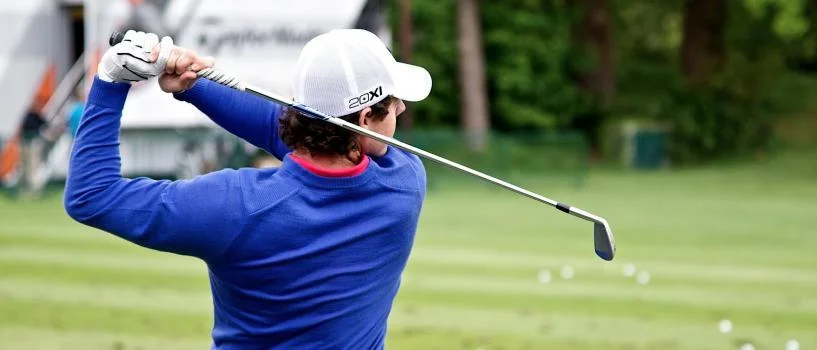
Tour stats include:
Club Speed, Attack Angle, Ball Speed, Smash Factor, Launch Angle, Spin Rate, Max Height, Land Angle and Carry.
TrackMan Average Stats Taken From The PGA TOUR
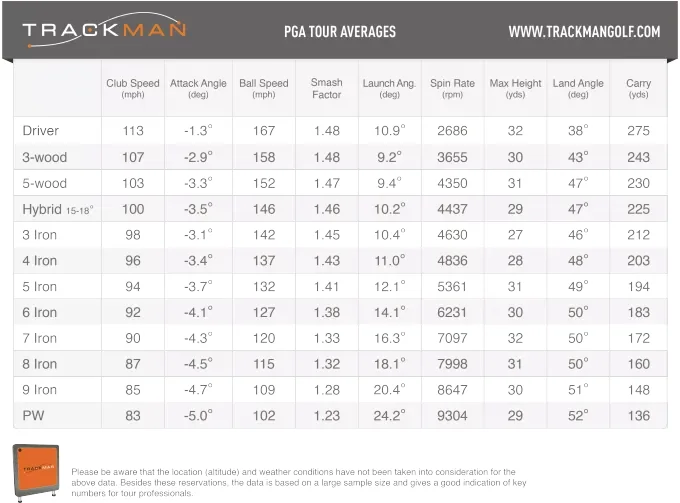
TrackMan LPGA Tour Average Stats
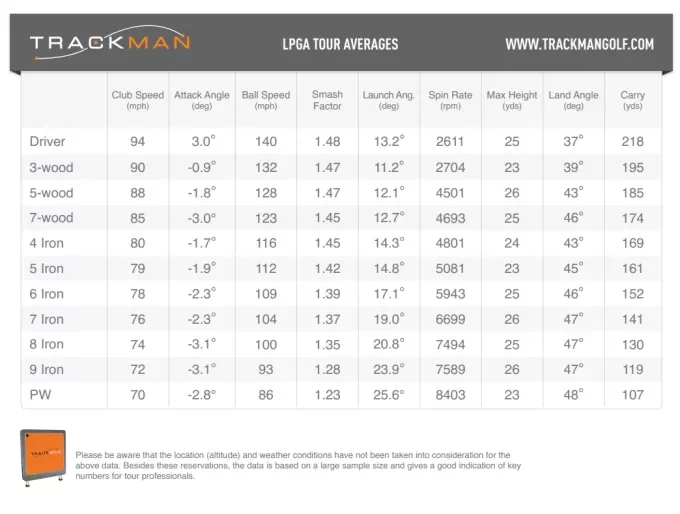
80 comments
So the average male Tour pro hits down on the ball slightly with the driver? Should attack angle vary with clubhead speed?
The attack angle for the pros varies on woods, but it’s more or less negative when it comes to hybrids and irons. For the average player, the attack angle on drivers varies and in general so should the ball that is hit from the ground always have a negative attack angle in order to get a better margin of error for the impact.
However, in order to get the longest carry possible, the ball should launch high with low spin. The optimal numbers are individual based on club speed – and that type of flight can easier be achieved if the spin loft is low together with a high dynamic loft. The more the attack angle is negative, then the higher the spin loft gets => the attack angle should be closer to 0 if anything IF the goal is to carry as long as possible.
But generally, the attack angle for irons should be from -2 – -5 for almost all players, but for drivers you can hit it further with a positive attack angle, no matter the club speed.
Niklas Bergdahl Support Manager EMEA & Asia
Can you send me the optimal numbers across the board that players and coaches should be looking for in lessons and trackman sessions
Strangely enough, with a driver you can achieve a carry of 300 vs 275 with the same clubhead speed of 113. Adam Young tries to get people to convert to this method. Attack angle = +8 degrees Launch angle = 19 degrees Backspin = 2,000 Smash Factor= 1.5
Hi. I can only confirm. I achieve those positive angles and l can carry the driver (9 degr loft) 245 yards with a club speed of 95mph. Rollout is average 20 yards.
No, it is 3° and that means the clubhead is movin upwards. – is downwards.
You are reading the LPGA (ladies) numbers Tim. The PGA (men) average is -1.3.
Looks like the average LPGA players trackman swing speed is more or less the same as an average 10 hcp male player. Though the ladies are a lot more skilled in hitting it on the right angles and in the right spot on the clubface. Would an average 10 hcp male player have a advantage or disadvantege using graphite shafts?
Harry, any player of any handicap can benefit from graphite shafts. More often than not, the memory in most players’ minds from graphite stems from a very long time ago when graphite was ONLY graphite. It was whippy, and not very accurate. Material advances and composite technology have nearly rendered steel obsolete. I say nearly, mind you. There are a number of outstanding graphite shafts out there that are super stable and responsive, enabling a lighter club and longer distance without sacrificing accuracy. Fujikura makes some really nice iron shafts that fuse both steel and graphite technologies called MCI. In fact, i have Fuji PRO 95i shafts in my irons and my iron game is better now than it ever was with steel. I’m a 3.5 index and relatively strong but it allows me to play all out without getting tired on the back 9 from heavy clubs. Being a club builder, i can tell you that in golf equipment there’s a trade-off in everything. wether it’s length, weight, or feel so your advantage or disadvantage is dependent on how precisely you build your piece of equipment.
Hey Chris thanks for the info below i find it very interesting. Curious do you have those same shafts in your wedges or do you have steel in your wedges? I played SteelFiber i95 shafts last year in all my irons including wedges. I liked them in my irons but i felt like it hurt my game in wedges. Do you have any thoughts on this? Thanks
Agreed. Shallow your angle of attack to match the LPGA players.
I have had a number of sessions on a Trackman, (the latest on Aug 22, 2015, at “Modern Golf” in Mississauga On.). My clubhead speed and distances are about the same as LPGA averages. I was doing wedge work, and see that for a pitching wedge, (48°), my angle of attack -about 7.5° – is n=much higher than LPGA average. My accuracy is good, (only 3 0f 19 shots more that 20′ away, and all when the face angle was over 4° closed). I’m thinking that I should weaken my left hand a bit, (it’s a little strong on pitch shots), and play the ball farther forward- 2″ ahead of centre. Am I on the right track, or will these changes introduce new problems?
I’m 74 years old, and am a long-time PGA of Canada member. Thanks for any feedback…. love Trackman outings.
I would recommend that you visit one of our certified coaches, he/she would be able to help you and find what numbers are best for you.
See our TrackMan Locator here.
I don’t disagree with these stats but I do it;s kinda weird. 87 miles mph with an 8 iron should produce 177 yards of carry not 160 that’s a lot of mph. Iv’e seen high school kids hit 9 iron 165 and they don’t swing 100 mph with a 9 iron. When I swing hard I hit my 8 iron 155 and my legit radar read 72 mph so logic would dictate at 88 mph you would get more like 180 yards carry again that’s a lot of mph.
Remember that’s a carry number not total distance. Also since the pros produce significant more back spin, their ball flight is higher, landing angle loftier producing minimum roll whereas your total distance might be benefiting from maximum roll. One more thing to check would be launch angle where you might be hitting a low ball flight to maximize distance which in my opinion is “cheating.”
The PGA Tour 8-iron goes 160 in the air for a couple of reasons. One, they usually hit weaker lofts than high school players (like I) do. Secondly, they spin their 8-iron at 7998 RPM to stop the ball on fast greens. I believe this is the combination that makes the 8-iron go so much shorter.
I’ve hit thousands of balls on Foresight simulators, and what I’ve found is that backspin significantly influences carry distance. Holding club head speed constant, greater backspin reduces carry distance on all clubs.
For mid-irons, I’d estimate that you lose roughly 5-7 yards of carry per 1,000 RPM in additional backspin. And with the driver it’s easily 10+ yards of carry lost per 1,000 RPM.
This explains why poorly struck balls will often fly as far, if not further, than a well-hit shot. The key to backspin is crispness of contact – a poorly struck shot simply won’t spin as much. Unless the impact is absolutely terrible, the lack of backspin on poorly struck shots will cause those balls to carry further than a well-struck ball. So if you’re flying balls over the green with your irons, the culprit could be too little backspin caused by poor contact, cheap balls, a dirty club face, etc.
I think this is also the key reason why fades don’t carry as far as draws. It’s not that a draw swing is any faster/more powerful – it’s simply that fades have more backspin due to the impact geometry/physics involved with that swing.
Now I may be wrong on some of this, so I’d love to get a true expert’s take.
One thing I forgot to add to my comment above is that you need a minimum of backspin on all golf shots just to get the ball up in the air. That may be 1,500 RPM for woods and maybe 3,000 for irons.
My point is that increasing backspin beyond this base level will generally reduce carry. For example, I can guarantee that increasing the backspin on your 7 iron from 5k to 7.5k will reduce your carry with that club, even if your swinging faster at 7.5k.
I totally disagree with your premise. Draws carrying further than fades? That makes no sense.
Bare in mind tour players play with proper golf clubs which are weak lofted so the people you see hitting a 9 iron further than tour average 8 it’s probably because that 9 iron is closer to a 7 iron loft
Spin determines weather you hit a draw or fade so logic would dictate distance will also be effected. In my experience draws do tend to be further for 2 reasons and both have to do with spin. With a draw you will usually get more roll out as well as flight because of the decrease in spin. This is especially true with a driver.
Depends what clubs you are using. There can be as much as 7 degrees of variation between a ‘standard’ loft on a 7 iron. If you’re playing the Callaway Mavrik irons, you’ll get 27 degrees of loft on a 7 iron. If you’re playing the Callaway Apex Pro then its 34 degrees. That’s a two club difference.
I was custom fit recently for the Apex 21’s and currently play Apex MBs. With the MBs my 7 iron has 34 degrees of loft and flies 165yds with 89mph average club head speed. Same swing with the Apex 21s (30 degrees of loft) flies between 177 – 180 yds. Big difference.
Larry , I would highly recommend you see Mark Evershed . Buy him lunch and get the answers your looking for .
Hi guys this was a recent session with a cobra 3 wood 16 deg loft.my question is my launch angle seems a little low ,interested in your thoughts .thanks Shot # Club Club Speed (mph) Ball Speed (mph) Smash Factor Launch Angle (degrees) Direction Back Spin (rpm) Carry Distance (yards) Total Distance (yards) 1 3 Wood 94 143 1.52 8.80 Straight 3874.00 215.00 232.00 2 3 Wood 98 148 1.51 9.10 Straight 4096.00 223.00 240.00 3 3 Wood 94 142 1.51 9.10 Straight 3904.00 213.00 230.00 4 3 Wood 94 143 1.52 8.80 Straight 3874.00 215.00 232.00 5 3 Wood 96 145 1.51 9.10 Straight 4000.00 219.00 236.00 6 3 Wood 94 143 1.52 8.80 Straight 3874.00 215.00 232.00 7 3 Wood 94 143 1.52 8.80 Straight 3874.00 215.00 232.00 8 3 Wood 93 141 1.52 8.80 Straight 3826.00 212.00 229.00 9 3 Wood 92 129 1.40 12.40 Straight 4138.00 190.00 207.00 10 3 Wood 94 142 1.51 9.10 Straight 3904.00 213.00 230.00 11 3 Wood 94 142 1.51 9.10 Straight 3904.00 213.00 230.00 12 3 Wood 94 143 1.52 8.80 Straight 3874.00 215.00 232.00 13 3 Wood 96 145 1.51 9.10 Straight 4000.00 219.00 236.00 14 3 Wood 93 140 1.51 9.10 Straight 3856.00 210.00 227.00 15 3 Wood 96 146 1.52 8.80 Straight 3970.00 220.00 237.00 16 3 Wood 92 140 1.52 8.80 Straight 3778.00 210.00 227.00 17 3 Wood 95 144 1.52 8.80 Straight 3922.00 216.00 233.00 18 3 Wood 96 145 1.51 9.10 Straight 4000.00 219.00 236.00 19 3 Wood 94 142 1.51 9.10 Straight 3904.00 213.00 230.00 20 3 Wood 91 137 1.51 9.10 Straight 3760.00 204.00 221.00 21 3 Wood 94 143 1.52 8.80 Straight 3874.00 215.00 232.00 22 3 Wood 95 144 1.52 8.80 Straight 3922.00 216.00 233.00 23 3 Wood 95 144 1.52 8.80 Straight 3922.00 216.00 233.00 24 3 Wood 96 146 1.52 8.80 Straight 3970.00 220.00 237.00 25 3 Wood 96 146 1.52 8.80 Straight 3970.00 220.00 237.00 26 3 Wood 96 145 1.51 9.10 Straight 4000.00 219.00 236.00 27 3 Wood 94 137 1.46 10.60 Straight 4054.00 204.00 221.00 28 3 Wood 94 143 1.52 8.80 Straight 3874.00 215.00 232.00 29 3 Wood 98 142 1.45 10.90 Straight 4276.00 213.00 230.00
What kind of balls were you using?
Brent. This was at a driving range with srixon range balls
Ok the one number that really stood out to me was the smash factor. Usually anything above a 1.50 indicates something is illegal. There’s a reason not even the PGA tour players aren’t averaging 1.50 off the tee. Other than that your numbers look good.
Brent what about the launch angle
Yes the launch is a little on the low side. But seeing how you’re still getting decent distance I wouldn’t worry too much about how it’s coming out. But try hitting down on the ball more to get it up in the air faster.
I frequently get above 1.5 on trackman with longer irons and my woods (I have raised this with your tech teams already). This is because your machine measures club speed just before impact and doesn’t detect acceleration through impact
Trackman doesn’t detect acceleration through impact on solidly struck shots so you can post smash factors above 1.5. It’s best to just rely on ball speed with Trackman
Brent in one of your comments you said my smash factor was high ,had a session last night at range and some of my smash factors were 1.53 is this something to try and change and if so how do I change it
Like you had said you were using range balls correct? If so the smash factor will be a little off since they aren’t a legal tournament ball. What the smash factor (as explained to me by the Carolinas PGA rules committee chairman) is, is a measurement of how well the ball comes off the face. There’s a specific calculation for it but I’m not positive of it and anything over a 1.50 usually is a tell tale sign that either the club or ball is illegal. What I would recommend doing is using the ball you would normally play a round with and get some readings off that ball.
I read not long ago that Rory Mcilroy had a smash factor of 1.53 as well . If Willie can hit it 380 the way Rory does, I wouldn’t change a thing.
Larry. I’m 55 years old 280 is my distance not 380 Like Rory
Ball speed divided by club head speed is smash factor
I’m currently doing my university project on green-side bunker shots, I was wondering if you have any shot data for a short bunker shot or flop shot? Thanks.
Sorry but we do not have any official data we can share, but it would be interesting to see your final research :)
Blair, My assumption would be that the cleaner a ball is picked out of a bunker the more spin it will have and vice versa. The more sand you use to move the ball the less spin.
Do you have TrackMan data for AoA and DL for greenside bunker shots?
Sorry we do not have any official bunker shot data.
In looking at the tour pro stats for men – the max height reading for all clubs is about 30 plus or minus 2. I am trying to understand how/why are the heights the same for all clubs? My assumption would be the more lofted the club the greater the height! Is 30ish the optimum figure for best distance? Because in my last stats my longest 9.5 degree driver shot was max height of 56!
Is there any data available from the Senior tour?
We do not have any official charts for the Senior Tour. But you can login on mytrackman.com and use the combine section and filter, to show only Senior Tour players.
Thanks Christian!
what month/year is this data from?
Is there any data on typical club path for a tour pro?
Can you please post stats for average path, club face, and face to path numbers for PGA tour?
Could you please post average path, club face, and face to path numbers for several top Tour Players?
Before all the hype about hitting up on the ball came about, I hit down on a driver anywhere from -2 to -4 degrees and swung 1-2 degrees left.
Once I started to try and swing up on it. I lost direction big time. An easy swing for me is 112, swinging hard at it I can get it up to 123. Does Trackman recommend those that have higher swing speeds to hit down on it for straighter direction?
There is no physics logic backing up that hitting up on the ball will give a decrease in accuracy. However to go from hitting down to hitting up you have made some changes to your impact obviously. The way you made the changes could well be the problem as this could have affected your impact location, swing path, clubface and the way you release the club
Can pga tour players carry the ball 293 yards.
A Question: Were some data change on this site? I ask because I’m quite sure to have read other data for the men’s driver trajectory. Am I wrong or can someone confirm this?
kindly zorro
Is my impression right, that the data for the men driver were changed from
[Daten alt: 112mph 165mph 11,2° 2685 31y 39° 269y] to [Daten neu: 113mph 167mph 10,9° 2686 32y 38° 275y] ?
Why did TM do that?
For the tour pro stats – mainly carry distance, launch angle and spin rate for the driver, you have the averages, could you supply the max and min (filtered for outliers)? I am going to run an experiment with Trackman at my golf academy and need a starting range for each item. The tour max and min range is a starting point versus having to create this from scratch.
Anyone know where I can find raw data of clubhead speed? It is for a College project. Thanks!
You know what would be great to see – average miss from target – left and right – for each club. Of course short and long from target matter as well, but solid contact isn’t really my issue – left and right misses is my challenge
I’m about a half club off of PGA Tour average distance wise. Technically I’m a 1 handicap, but more like 4 or 5 when the tourney pressure is on. I know from playing with better players the difference between me and them is pretty much how much more accurate they are from a left and right perspective.
You can find all this info from Mark Broadie. He has tracked all the shots on the us tour for years and also written a book Every Shot Counts about it
I have been playing Golf for less than 19 months. I must admit I was damn tired of the same Golf Lesson producing varying results with inconsistent instruction(s) which seemed contradictory to the previous lesson. I take Golf perhaps a little more serious than others and my “approach” to this game may be viewed as extreme due to my focus on Fitness/Strength Training combined with my Yoga and Nutritional regimen.
That notwithstanding I would like to formally THANK the Trackman Developers and Support Staff for FINALLY producing a “Standardized” curriculum eliminating the traditional random quick fixes and circumventing the often inconsistent and contradictory methods being taught today.
I currently own a Trackman 4 and although I DO NOT wish to teach, I am Certified as an Operator and successful in obtaining my Professional Level 1 & 2 Certifications and shortly will be submitting my Thesis to be considered for review. These Certifications have greatly assisted me in understanding Flight/Ball dynamics and greatly assists my Coach and I in our 4-5 hour daily Putting-Wedge-Iron-Wood and Driver Sessions providing the data necessary to produce a more consistent and …. I have a hard time with this next word…… F U N game. (There I said the word “fun” in the same sentence as “Golf.” I’m so proud of myself!!!
Seriously, I simply CANNOT thank Nathan Meyer for coming to my hometown and demonstrating the enormous benefit(s) of purchasing the Trackman 4 product.
Kym Fontana [email protected]
It has been an absolute pleasure getting to know you! Your work ethic, attitude, and kindness are all things that I can look up to. very excited for 2017 and I am looking forward to seeing you again soon!
-Nathan Meyer [email protected]
Are there numbers posted for an average 5 HCP player or 10 HCP player similar to the charts above for the ave tour player?
What is the #1 PGA Tour player in “Carry Distance” average carry distance??
I understand this data is pretty old, released soon after the time when trackman first came out. I’m sure things have changed since then. Any update?
Actually, we haven’t seen any huge changes over the past years, it’s more about roundings. For example, Avg. Club Speed for a driver: 2014: 113.0 mph 2015: 113.3 mph 2016: 112.9 mph And it’s pretty much similar with the other numbers.
We do have a graphical updated version of the Tour Stats here.
Not really. Lee Westwood was interviewed recently and advised that apart from his driver he hits everything else almost the exact same he has his entire career.
I’m looking for PGA tour averages for dynamic loft for different clubs. Does anyone have this data to share? Thanks!
Are there tour averages for club path?
Are all these stats full swings? Example: Would the avg tour pro hit a 6-iron further, if he turns fully and tries to hit it as far as possible (with a natural movement like on a driver – not with an unnatural swing that creates most possible power, but result in very unconsistent ball flight)?
Currently I practice indoors because of the winter. I do my practice with Trackman and I carry my 7 iron about 177-180 yards and total distance of 188-192 yards with my TaylorMade PSi irons. Lots of my shots with the 7 iron has a smash factor of 1.50-1.51.
This is a example of one of my shots with 7 iron.
Club speed: 80.2 | AoA: 1.3 | Ball speed: 120.5 | Carry: 164 meter | Total: 176 meter | Dyn Loft: 19.6 | Smash Factor: 1.50
Is that normal number for a 7 iron with a that club speed?
Averages are useful, but knowing them would be more useful if we knew the median and mode, as well as the range.
Hello, Are there updated PGA Tour Trackman stats?
On Trackman this week using 7i I noticed the spin rate I had was well below that of a pro by nearly 3,000 rpm but similar club speed and attack angle. How can I get my spin rate up?
It can vary a lot due to the ball and clubs you are using. For example driving range balls are normally very hard and will have much lower spinrates than a quality ball like a Titleist pro v1. Modern day irons are also built to higher the lauch angle and lower the spinrate so that the average golfer will achieve more distance
It would be great to know the average loft for each club, especially the irons!. I think 21-24-27-30-34-38-42-46 (3-Pw) are reasonable specs. What do you guys think?
What loft are the irons? A modern 7i is now 30°
Is this still the original data from 2015 or has it been updated?
I’d be very curious to see if the how the average attack angle has changed over this time in the PGA.
Please update this data from over the years of more testing.
Do you have any numbers on tour averages numbers on dynamic loft and spin loft?
I am a 2 handicapper and I hit my driver 280 yards on an average. What is the attack angle with driver of the best players on the pga tour?
these yardages are no doubt well below reality.
6 iron only 183yds carry? Most high handicappers hit it equally far.
Leave a Reply Cancel reply
- Coach Of The Month
Subscribe and get the latest Insights!
Recent comments.
- Keith Rogers on Paul McGinley – How To Practice
- Anthony on 6 TrackMan numbers all amateur golfers should know
- BillM on TRACKMAN HANDICAP
- Tim Work on How To Work On Attack Angle
- WAYNE B EISMAN on 6 TrackMan numbers all amateur golfers should know
Stay updated
Stay up to date and receive free notifications of new posts by email.
Email Address
Subscribe - It's Free!
- Coach of the month
Please enable JS and disable any ad blocker

What Drives the Senior Tour Pros? Most Popular Driver on Champions Tour (2024)
Written by Graeme Hay | Last Updated: 25/04/2024
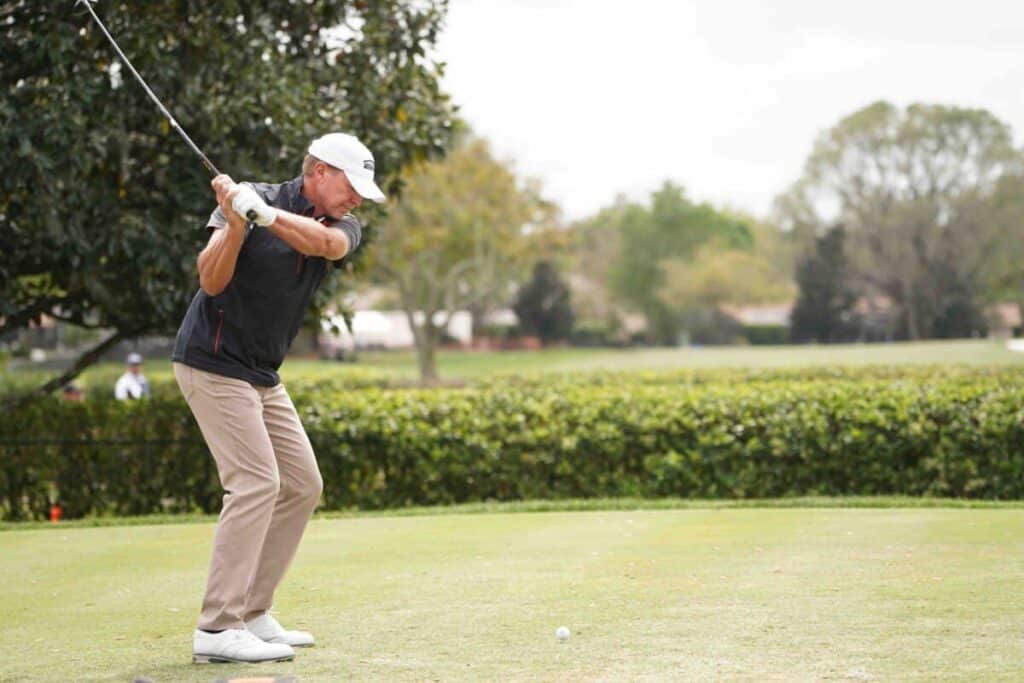
We have looked in the past at the clubs and drivers the top PGA Tour players use but given the distances they hit the ball are on a different planet to regular amateurs we wanted to see whether more can be learned from the most popular drivers used by Champions Tour pros.
Although the average driver swing speeds on the senior tour are still over 106mph – and therefore well above the average male amateur’s at 93.4mph – it is still closer than the 115mph average on the main PGA Tour.
So taking a in-depth look at the details of the drivers used by the best Champions Tour pros this is what we found.
PING’s G430 LST and TaylorMade’s Stealth Plus are the most popular drivers on the Champions Tour according to data available. Miguel Angel Jiménez and John Daly are G430 LST users while Fred Couples chooses the Stealth Plus. Titliest’s TSR3 and Callaway’s Rogue ST and Paradym Triple Diamond are the next most used models.
Basic makes and models of driver only tell us so much however so we didn’t just stop there and did a detailed analysis of the lofts the best pros on the senior tour are playing together with the specs of the driver shafts they use.
And finally we took a look at who was sponsored by which manufacturer to get an idea of how that factor potentially influences the driver choices among the top Champions Tour pros.

Most Used Drivers On the Senior Tour? Callaway Lead the Way
Driver data for the PGA Champions Tour is not as readily available as on the main PGA Tour.
So when we looked at the details of the drivers being used by the top 100 pros on the senior Tour to find which were the most used we were only able to find complete driver data for just over half – 51 to be exact – of this elite group.
In total we found 30 different driver models of driver being used among the 51 Champions Tour pros we found driver information for among the top 100 and when it came to the different brands being chosen this is what our detailed analysis found.
Callaway drivers are the most used on the Champions Tour with 33% of the senior pros analysed using them, including Steve Stricker. PING models are the next most popular picked by 27%. TaylorMade and Titleist drivers are each chosen by 13% with Tour Edge used by close to 10%. Japanese brand XXiO is used only by Ernie Els.
Callaway and PING therefore clearly dominate this group accounting for 31 of the 51 drivers we found in play with TaylorMade, Titleist and Tour Edge models making up the vast majority of the rest.
What was interesting to note though was that while Titleist are the dominant force among the drivers used on the PGA Tour their models are a much less popular choice among the top pros on the Champions Tour.
A key question of course when it comes to driver choices by all the pros however is of course how much it is influenced by sponsorship deals.
Once again the data available on Champions Tour pros is not nearly as abundant as on the PGA Tour but our analysis found 45% of the 51 senior pros we researched playing the same driver model as one of their sponsors.
In all likelihood this number is potentially higher however there were clear examples, including the great Bernhard Langer – who carries six different brands of club in his bag – that sponsorship is not always the overriding factor when it comes to the driver choices the senior pros make.
Further while the dominant driver makes and models among the best senior pros may be a bit different to those found on the main Tour what is clear though, when you look in detail at the drivers the Champions Tour pros use, is that they go into just as much detail when it comes to the exactness of their driver set up.
Just as on the PGA Tour each driver is clearly custom-fitted to a precise extent for each player and even though we found 5 PING G430 LST drivers being used you can be sure there will be a unique set-up for each pro.
Not only that certain players carry more than one driver around the Champions Tour with them switching between the two, or even three, depending on the conditions of the course they are playing that week or simply due to them having more confidence in one than the other at a particular time.
Dickie Pride for example carries a PING G410 Plus around with him in addition to the Callaway Rogue ST he typically puts in play while Brian Gay also has a Cobra LRDx LS in his bag together with a TaylorMade Stealth Plus.
“Nobody has ever noticed it and I’ve been doing this for three years. Every other club I use a single overlap grip. On my driver, I use a double overlap.” Padraig Harrington, 2022 US Senior Open Champion and ranked 1 in driving distance on 2023 PGA Champions Tour
Steve Flesch by comparison carries not two but 3 different models of the Callaway Rogue ST driver family allowing him to alternate between the standard Rogue ST Max and the draw-biased Max D and LS (‘low spin’) options.
It is also noticeable that not all the Champions Tour pros we found data for are immediately moving to the latest model of their preferred brand of driver and continue to play with older driver models.
Doug Barron continues for example to use his old trusty TaylorMade Stealth driver because he says he “hits it 15 yards longer than anything else I tried.”
And that search for distance also caused us to notice another couple of quirks among the top senior pros.
Padraig Harrington topped the driving distance charts on the Champions Tour in 2023 with an average total distance of 302.4mph.
Incredibly to do this Harrington has increased his driver swing speed to measurements of 120mph and above on the Champions Tour up from the 116 mph speeds he was recording when he was winning both the 2008 British Open and USPGA at the peak of his golfer powers.
But not only that he also employs a ‘baseball’ style grip only when using his driver – he uses a standard overlap grip for all his other clubs – in an effort to release a little extra energy into the driver clubhead for more overall power.
You can see him doing this in the video below and given his driving distance numbers as he enters his 50s it is clearly working!
What Driver Loft Do Senior Pros Use? It Typically Starts with 9 or 10.
When we looked at the degree of driver the top pros on the PGA Tour use we were immediately struck by the variance and precision in driver lofts they chose to put in play.
And when it comes to the best pros on the PGA Champions Tour it appears they are equally as exacting in their approach.
9 degrees is the most used driver loft among the Champions Tour pros for which data is available with 24% setting up with it, including Padraig Harrington. 10.5º is the next most popular loft with 1/5 choosing it. 2023 Tour winner Steve Stricker chooses an 8º driver while 6º is the lowest driver loft used by Brian Gay.
It is common of course for top pros on all the major tours to change the loft of their driver on occasion depending on the course set-up they are playing on any particular week and this is again noticeable on the Champions Tour.
Kirk Triplett, for example, has a 9º and 10.5º PING G425 Max driver in his golf bag but for other senior pros, changes extend to carrying more than one driver of both different lofts and models.
For Dicky Pride this means taking an 8º PING G410 Plus driver around on the Champions Tour with him alongside his more regularly used 9º Callaway Rogue ST driver.
Brian Gay meanwhile, while typically putting the lowest lofted driver on the tour in play with his 6º TaylorMade Stealth Plus also carries a 7.5º Cobra LTDx model in his bag to use on different occasions.
Interestingly however we found no difference in the variance in driver lofts used by different age groups of the top 100 on the Champions Tour and as such their loft choices did not appear to be affected by this factor.
What Driver Shaft is Most Used on the Champions Tour?
When it comes to driver shafts pro golfers are very exacting and our analysis of the shafts the top senior pros put into the biggest club in their bag again found this in evidence.
Among the 51 of the top 100 Champions Tour pros for which we found driver data we discovered 29 different models of driver shaft being used.
Fujikura’s Ventus Red 6X and Black 6X driver shafts are the most popular on the Champions Tour with nearly 1/4 of senior pros using one. The Ventus Blue 6X is the next most popular alongside PING’s Tour 65 S shaft chosen by 6%. Graphite Design’s Tour AD DI and IZ 6X shafts are the third most common with close to 5% picking them.

According to our analysis the driver shaft choices of the top Champions Tour pros map almost identically to those on the main tour with the Fujikura Ventus Black 6X topping the charts among the top 100 on both these tours.
We did find more variety of driver shafts on the PGA Tour compared to the Champions Tour however given the variety of shaft choices we found in this research the senior pros are clearly just as exacting when it comes to making their driver shaft choice.
Kevin Sutherland interestingly for example carries two models of his 10.5º PING G425 LST with two different shafts in them.
One is fitted with an extra stiff flex Ventus Red 6X while the other has a stronger True Temper’s Project X HZRDUS Smoke Red RDX 60 TX flex shaft in it.
And the two versions of the same driver we noted above that Kirk Triplett is using don’t just have different lofts but also slightly different shafts in them.
While his 10.5º PING G425 Max has an Aldila Tour Blue 60 TX shaft the 9º model of the same driver he has in his bag has a slightly heavier Tour Blue 70 TX shaft in it.
Steve Flesch meanwhile takes things even further choosing 3 different shafts from 3 different manufacturers – True Temper, Graphite Design and Fujikura – in the three different models of the Callaway Rogue ST driver family he alternates between.
So just like their colleagues on the main tour the senior pros are tinkering just as much when it comes to driver shafts although it is interesting that although like on the PGA Tour Fujikura was the top driver shaft brand Mitsubishi shafts were fifth most used on the Champions Tour drivers we found data for.
This compares to its position as the second most popular choice of driver shaft brand on the main tour.
On the Champions Tour by comparison behind Fujikura’s position as the dominant driver shaft brand Graphite Design shafts are the second most popular with 16% using them.
True Temper shafts are the 3rd most common with just under 12% choosing them with PING in 4th place with 6% picking their Tour 65 S shaft.
Mitsubishi driver shafts by comparison are the choice of only 2% of this Champions Tour group we analysed compared to their use by 1/4 of the top 100 pros on the PGA Tour.
Breakdown of Drivers Used by PGA Champions Tour Players
And finally just to give the full picture of how many and which pros are using which brand and model of driver here is the complete breakdown of the 51 drivers used by the top 100 Champions Tour pros we found data on in order of popularity.
Before you go …
Knowing what drivers the top Champions Tour players are using is interesting but with the driver swingspeeds of the average senior pro being well over 10mph faster than the average male amateur (106.6mph vs. 93.4mph) there is likely more to learn from the drivers being played by the best female pros.
So have a read of our next article to find out what drivers the best LPGA pros are choosing with their 94mph average driver swing speeds…
What Drivers Do LPGA Players Use?
Other top posts related to this topic:
- What Driver is Most Used On the PGA Tour? Top 100 Player Analysis
- Most Popular Driver on LPGA Tour? Top 50 Player Guide
- The Go-To Fairway Woods Of Senior Tour Champions
- Champions Hybrid Heroes. Most Used Hybrids By Champions Tour Pros
- Champions’ Choice: The Most Used Irons on the Champions Tour
- Flexible Friends: Uncovering The Shafts Champions Tour Players Use
- From Tee to Green: Analyzing What Golf Balls Champions Tour Pros Use
- In The Bag: Unpacking The Clubs Champions Tour Players Use
- What Clubs Do Pro Golfers Use? Top 100 PGA Tour Player Guide
- What Clubs do LPGA players use? Top 50 Player Breakdown
Leave a Reply Cancel reply
Your email address will not be published. Required fields are marked *
Save my name, email, and website in this browser for the next time I comment.
RECENT ARTICLES

Champions Hybrid Heroes. Most Used Hybrids by Champions Tour Pros (2024)

The Go-To Fairway Woods of Senior Tour Champions (2024)

Flexible Friends: Uncovering the Shafts Champions Tour Players Use (2024)

In the Bag: Unpacking the Clubs Champions Tour Players Use (2024)

Champions’ Choice: The Most Used Irons on the Champions Tour (2024)
LEGAL INFORMATION
This site is owned and operated by Golfing Focus Limited, a private limited company whose registered office is in London, UK. Golfing Focus Limited is a participant in the Amazon Services LLC Associates Program, an affiliate advertising program designed to provide a means for sites to earn advertising fees (at no cost to you) by linking to Amazon.com. Golfing Focus Limited also participates in other affiliate programs with the eBay Partner Network, FlexOffers, CJ.com, Svorn and other sites and is compensated for referring traffic and business to these companies (again at no cost to you).
Our Socials
Golf Drivers
- Sale Refine by On Sale: Sale
- Callaway (23) Refine by Brand: Callaway
- Cleveland (8) Refine by Brand: Cleveland
- COBRA (24) Refine by Brand: COBRA
- Head (2) Refine by Brand: Head
- Head by Powerbilt (2) Refine by Brand: Head by Powerbilt
- Mizuno (10) Refine by Brand: Mizuno
- PING (12) Refine by Brand: PING
- Srixon (4) Refine by Brand: Srixon
- TaylorMade (16) Refine by Brand: TaylorMade
- Titleist (7) Refine by Brand: Titleist
- Tour Edge (10) Refine by Brand: Tour Edge
- Wilson (5) Refine by Brand: Wilson
- XXIO (9) Refine by Brand: XXIO
- Adams Golf (2) Refine by Brand: Adams Golf
- Under $160 Refine by Price: Under $160
- $160 - $199.99 Refine by Price: $160 - $199.99
- $200 - $299.99 Refine by Price: $200 - $299.99
- $300 - $499.99 Refine by Price: $300 - $499.99
- $500 - $749.99 Refine by Price: $500 - $749.99
- $750 and Up Refine by Price: $750 and Up
- Right Hand Refine by Right or Left Hand: Right Hand
- Left Hand Refine by Right or Left Hand: Left Hand
- Regular Refine by Flex: Regular
- Stiff Refine by Flex: Stiff
- Senior Refine by Flex: Senior
- Ladies Refine by Flex: Ladies
- Extra Stiff Refine by Flex: Extra Stiff
- 10° Refine by Loft: 10°
- 10.5° Refine by Loft: 10.5°
- 12° Refine by Loft: 12°
- 12.5° Refine by Loft: 12.5°
- 13° Refine by Loft: 13°
- 13.5° Refine by Loft: 13.5°
- 15° Refine by Loft: 15°
- 11.5° Refine by Loft: 11.5°
- 8° Refine by Loft: 8°
- 8.5° Refine by Loft: 8.5°
- 9° Refine by Loft: 9°
- 9.5° Refine by Loft: 9.5°
- High Launch Refine by Loft: High Launch
- 11º Refine by Loft: 11º
- Rory McIlroy Refine by What's In Their Bag: Rory McIlroy
- Jon Rahm Refine by What's In Their Bag: Jon Rahm
- Scottie Scheffler Refine by What's In Their Bag: Scottie Scheffler
- Justin Thomas Refine by What's In Their Bag: Justin Thomas
- Collin Morikawa Refine by What's In Their Bag: Collin Morikawa
- Max Homa Refine by What's In Their Bag: Max Homa
- Jordan Spieth Refine by What's In Their Bag: Jordan Spieth
- Xander Schauffele Refine by What's In Their Bag: Xander Schauffele
- Will Zalatoris Refine by What's In Their Bag: Will Zalatoris
- Viktor Hovland Refine by What's In Their Bag: Viktor Hovland
- Tony Finau Refine by What's In Their Bag: Tony Finau
- Rickie Fowler Refine by What's In Their Bag: Rickie Fowler
- Brooks Koepka Refine by What's In Their Bag: Brooks Koepka
- Unisex Refine by Gender: Unisex
- Women's Refine by Gender: Women's
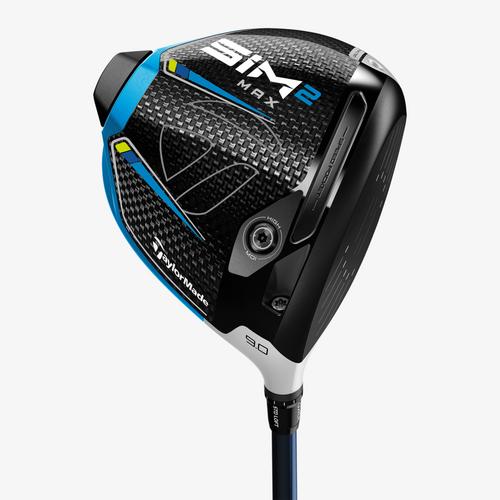
One of the most important and sought after golf clubs is the golf driver. The golf driver is what most golfers start each hole with and having the right driver for your round can set you up for success. The golf driver is the largest golf club in the bag and is meant for driving the golf ball long distances off the tee. Drivers have enlarged club heads allowing you to tee the ball high up from the ground to give maximum height and distance off the tee. The golf driver allows you to reach the hole in less strokes because of the enormous distance it can provide in just one stroke. Having the right golf driver is critical to ensure you are playing at your best potential. Having a golf club driver that doesn’t fit you, your style, or even your posture can negatively affect your play. Finding a driver that agrees best with you means finding one with the right loft angle, flex, and center of gravity, which affects your ball control and speed. With our team of fitting experts , we can help you ensure you will find the best fit for your game. PGA TOUR Superstore has a wide selection of golf drivers for sale, with several brands such as Callaway, Cobra, PING, and TaylorMade, we offer the best drivers for everyone. You will also find the newest golf drivers featuring the best designs and technology advantages for your game. Want something more specific? We have golf driver for left handed and right handed golfers . Looking to upgrade your golf clubs set? No need to look further! At PGA TOUR Superstore, we offer a wide selection of golf clubs for every level of golf player to fit every play style. Shop at PGA TOUR Superstore and perform your best today!
If you need help understanding which golf driver is best for you, check out our Learning Center to learn more about finding the best golf driver for you.
Remove Product?


Scottie Scheffler gave the most Scottie Scheffler answer ever when asked how he would celebrate his latest PGA Tour win
S cottie Scheffler continued his machine-like dominance of the PGA Tour on Monday, finishing off a rain-delayed final round to win the RBC Heritage by three shots. He then shared his victory celebration plans, which were, predictably, just as machine-like.
RELATED: Cameras catch Scottie's amazing reaction to Bryson's hole-out
Scheffler's win was his fourth in his past five starts, including a second major championship at the Masters. That runs his career total to 10 PGA Tour titles, but even with no plans to play until next month's PGA Championship, the 27-year-old wasn't about to live it up. Check out this exchange in his post-round interview:
Q. How are you going to celebrate this one?
SCOTTIE SCHEFFLER: I'm going to get a breakfast burrito, some coffee, and I'm going to go home.
OK then. Not that we blame him.
Scheffler says he celebrated the Masters win for a couple days at home—including stopping at a Dallas dive bar —before heading to Hilton Head on Wednesday. Heck, that's probably the only reason he didn't have a better first round and win the event by more than three shots.
And we know from this adorable joint-birthday celebration with Tom Kim last year that Scheffler isn't the craziest partier.
But he and his wife, Meredith, also have that first baby coming any day. So he could use all the rest he can get—as this funny tweet from Outkick's Mark Harris pointed out.
So enjoy that breakfast burrito, Scottie. And enjoy taking it easy. Oh, and get used to needing some coffee.
RELATED: Scottie Scheffler is playing so well his caddie is outearning Rory McIlroy

- Getting Results.
- Newsletters
PGA Tour players learn how much loyalty is worth in new equity program
Doug Ferguson
Associated Press
Copyright 2024 The Associated Press. All rights reserved
Tiger Woods waves after his final round at the Masters golf tournament at Augusta National Golf Club Sunday, April 14, 2024, in Augusta, Ga. (AP Photo/David J. Phillip)
Players who stayed loyal to the PGA Tour amid lucrative recruitment by Saudi-funded LIV Golf are starting to find out how much that loyalty could be worth.
The PGA Tour on Wednesday began contacting the 193 players eligible for the $930 million from a “Player Equity Program” under the new PGA Tour Enterprises .
Recommended Videos
The bulk of that money — $750 million — went to 36 players based on their career performance, the last five years and how they fared in a recent program that measured their star power.
How much they received was not immediately known. Emails were going out Wednesday afternoon and Thursday informing players of what they would get. One person who saw a list of how the equity shares were doled out said the names had been redacted. The person spoke to The Associated Press on condition of anonymity because many details of the program were not made public.
The Telegraph reported Tiger Woods was to receive $100 million in equity and Rory McIlroy could get $50 million, without saying how it came up with those numbers.
Commissioner Jay Monahan outlined the first-of-its-kind equity ownership program in a Feb. 7 memo to players, a week after Strategic Sports Group became a minority investor in the new commercial PGA Tour Enterprises.
The private equity group, a consortium of professional sports owners led by the Fenway Sports Group, made an initial investment of $1.5 billion that could be worth $3 billion. The tour is still negotiating with the Public Investment Fund of Saudi Arabia — the financial muscle behind the rival LIV Golf league — as an investor.
Any deal with PIF would most certainly increase the value of the equity shares.
Another person with knowledge of the Player Equity Program, speaking on condition of anonymity because of the private nature of the dealings, said the equity money is not part of the SSG investment. That money was geared toward growth capital.
Golf.com received a series of informational videos on the Player Equity Program that was sent to players and reported only 50% of the equity would vest after four years, 25% more after six years and the rest of it after eight years.
It also reported how the 36 players from the top tier were judged on “career points,” such as how long they were full members, victories, how often they reached the Tour Championship and extra points for significant victories.
Jason Gore, the tour's chief player officer, said in one of the videos, “It's really about making sure that our players know the PGA Tour is the best place to compete and showing them how much the Tour appreciates them being loyal.”
Emails also were sent to 64 players who would share $75 million in aggregate equity based on the past three years, and $30 million to 57 players who are PGA Tour members. Also, $75 million in equity shares was set aside for 36 past players instrumental in building the tour.
The program has an additional $600 million in equity grants that are recurring for future PGA Tour players. Those would be awarded in amounts of $100 million annually started in 2025.
Players only get equity shares from one of the four tiers now, although everyone would be eligible for the recurring grants.
Even with equity ownership geared toward making the PGA Tour better, the concern was players questioning who got how much and whether they received their fair share.
LIV Golf lured away seven major champions dating to 2018 since it launched in 2022, all with guaranteed contracts and most of them believed to have topped $100 million.
McIlroy, playing this week in the Zurich Classic of New Orleans, was asked how much would make players feel validated for their decision to stay with the PGA Tour.
“I think the one thing we’ve learned in golf over the last two years is there’s never enough,” McIlroy replied.
AP golf: https://apnews.com/hub/golf
Copyright 2024 The Associated Press. All rights reserved. This material may not be published, broadcast, rewritten or redistributed without permission.
Winner's Bag: See clubs Scottie Scheffler used to win second green jacket
Winner's Bag
Change Text Size
Check out the clubs he used for his victory below:
Driver: TaylorMade Qi10 (8 degrees) Shaft: Fujikura Ventus Black 7 X
3-wood: TaylorMade Qi10 (15 degrees) Shaft: Fujikura Ventus Black 8 X
Irons: Srixon ZU85 (3, 4), TaylorMade P7TW (5-PW) Shafts: Nippon N.S. Pro Modus 3 Hybrid Prototype 10 X (3), True Temper Dynamic Gold Tour Issue X100
Wedges: Titleist Vokey Design SM8 (50-12F, 56-14F), Titleist Vokey Design WedgeWorks Proto (60-T) Shafts: True Temper Dynamic Gold Tour Issue S400
Putter: TaylorMade Spider Tour X Grip: Golf Pride Pro Only Cord
Grips: Golf Pride Tour Velvet
Ball: Titleist Pro V1

IMAGES
VIDEO
COMMENTS
On the PGA Tour, it's relatively downward at -1.3. This is why some LPGA players could benefit from the lower-lofted drivers used by PGA Tour players swinging 20 or even 30 mph faster.
2017 - Rory McIlroy (317.2 yards) Driver: TaylorMade 2017 M2 460. Loft: 8.5 degrees (standard loft setting) Shaft: Mitsubishi Chemical Kuro Kage 70XTS. Length: 45 inches. Swing weight: D7. Grip ...
9 degrees is the most used driver loft among the top 100 PGA Tour pros with 32 setting up with it, including Rory McIlroy. 14 of this group play a 9.5º loft. The next most played degree of driver is 10.5º chosen by 8 pros with 8º and 10º used by 7 each. 6.5º is the lowest driver loft in the top 100 and 12.1º is the highest.
10.5 Degree Loft. A 10.5 degree driver loft is suited to the recreational golfer who has a slower swing speed or doesn't hit the ball on an upward launch angle. Most golfers tend to hit downwards on the ball and a 10.5 degree driver will help you get the ball into the air even without the fastest of swings.
Driver lofts for most golf clubs range from roughly 8-11 degrees. For example, the popular Callaway Rogue ST Max driver has three options; 9, 10.5 degree, and 12 degree actual loft. While the TaylorMade Stealth is available in the same three options. Like other golf equipment, these are adjustable drivers on the market.
To help fit his golf swing, Rahm prefers to have a bit more loft on his clubs. For example, his 10.5-degree Callaway Rogue ST Triple Diamond LS driver head has 11.2 degrees of actual measured loft ...
It's important to remember that a lower loft driver won't always be better for fast swing speeds, and there's no one best driver loft for distance. While golfers like Bryson DeChambeau stand out for having a 5-degree lofted driver , many PGA tour players also play with a 10.5-degree driver.
Golfers with this swing speed would typically benefit from a driver between 12-14° of loft. 2.Upward Hitters. Golfers that hit up on the ball (have a positive attack angle) will tend to spin the ball less because their spin loft is lower. So they can therefore afford to have slightly more loft to maximise distance.
Schedule PGA Tour 2023-2024. Videos & Podcasts. ... How to match your driver loft to your swing speed. True Spec and GOLF.com are operated by the same holding company, 8AM Golf.
If you fall in the 70 mph or under range, it's best to select a driver with a loft of around 18-19 degrees (similar to a 5-wood). Most average handicap golfers will have a swing speed of around 80-90 mph and would benefit from a driver loft of anywhere from 10-12 degrees. If yourswing speed is 100 mph or more you can often step up to a driver ...
Note: While you can estimate a suitable driver loft based on your swing speed, individual needs may vary. Hence, I advocate for club fitting. Explore Brendon's comprehensive club fitting journey at the PGA Tour Superstore. Which Driver Loft Is Optimal for High Handicappers? A 10.5-degree loft driver is ideal for high handicappers and novices ...
What Driver Lofts Do The Pros Use. Most professionals on the PGA golf tour are using a driver with a loft between 9 and 10.5. The golfers will change the loft based on the shaft they have on their club and how the shaft impacts the ball flight as well. Most golfers on the professional circuit have a very fast swing speed.
On the flip side, drivers found on the PGA Tour are digitally lofted to ensure the number is precise. With the amount of time pros spend dialing in their swing and launch characteristics on a ...
Dynamic Loft is the amount of loft on the club face at impact and is measured relative to the horizon. ... Tour Averages. PGA TOUR. Driver - 12.8 degrees ... LPGA Tour. Driver - 15.5 degrees; 6 iron - 23.6 degrees; For a full list of Tour averages, visit TrackMan PGA and LPGA Tour Averages. TrackMan Combine Averages.
Professional golfers tend to play with a driver that has about 9.5 degrees of loft. Of course, there are some golfers who find 10.5 or 8.5 to be more effective, but you will generally see most players end up in the 9 to 9.5 range. The loft on the driver makes it easier to launch. However, most players who are on professional golf tours do not ...
Total Efficiency: 2.56 (distance/club speed) LPGA Tour Average Golfer. Club Speed: 94 mph. Attack Angle: 3 degrees (up) Total Distance: 250 yards. Total Efficiency: 2.65 (distance/club speed) The average course length PGA Tour is about 7200 yards. This means the average of each hole is 400 yards. With the average drive traveling a total of 290 ...
The ball speed may change, however, when a player manipulates his swing due to the "look" of different lofts, which can cause them to hit shots in different areas of the face. Generally, as loft goes up, so does the spin rate, as you can see in the data. My shot with the driver adjusted to 8.5 degrees of loft had 2282 rpm of spin.
The second driver, which will replace his 3-wood, will measure about the length of his 3-wood and has 10.5 degrees of loft, according to Ping Tour rep Kenton Oates.
TrackMan PGA Tour Average stats including Club speed, Attack Angle, Ball Speed, Smash Factor, Launch Angle, Spin Rate, Max Height, Land Angle and Carry. ... Hi. I can only confirm. I achieve those positive angles and l can carry the driver (9 degr loft) 245 yards with a club speed of 95mph. Rollout is average 20 yards. Reply. Tim March 5, 2021 ...
The most common driver loft is 9 degrees with 17 players choosing that degree of driver. 10.5 degrees is the next most used loft with 11 golfers opting for that degree of driver with another 5 players each choosing 9.5 and 10 degree drivers. ... The PGA Tour's Rising Driver Ball Speeds Mean One Thing - $$ Leave a Reply Cancel reply. Your ...
Scottie Scheffler dominated the field at the RBC Heritage to win in back-to-back weeks and four times in five starts with Qi10 driver, Qi10 fairway, P·7TW irons and Spider Tour X putter. After opening the tournament with a 2-under 69, Scheffler caught fire and put together three dominant rounds of golf closing out the tournament with scores of ...
Fujikura's Ventus Red 6X and Black 6X driver shafts are the most popular on the Champions Tour with nearly 1/4 of senior pros using one. The Ventus Blue 6X is the next most popular alongside PING's Tour 65 S shaft chosen by 6%. Graphite Design's Tour AD DI and IZ 6X shafts are the third most common with close to 5% picking them.
Tyrrell Hatton. Hatton, who won the European Tour's 2021 Abu Dhabi HSBC Championship, uses a Ping G425 LST 10.5-degree head, built with a Mitsubishi Diamana RF 60TX shaft. Interestingly, Hatton ...
Golf Drivers. One of the most important and sought after golf clubs is the golf driver. The golf driver is what most golfers start each hole with and having the right driver for your round can set you up for success. The golf driver is the largest golf club in the bag and is meant for driving the golf ball long distances off the tee.
Scottie Scheffler went back-to-back for a second time this season on the PGA TOUR this time at the RBC Heritage, a week after earning his second green jacket. ... Driver: TaylorMade Qi10 (8 ...
Early-week at the Masters, Morikawa switched into a TaylorMade Qi10 LS 9-degree driver, after using his older SIM model for most of the year. He also switched into a TaylorMade Qi10 core-model 3 ...
Scottie Scheffler continued his machine-like dominance of the PGA Tour on Monday, finishing off a rain-delayed final round to win the RBC Heritage by three shots. He then shared his victory ...
Rory McIlroy, ranked fourth in Driving Distance on the PGA TOUR, has added TaylorMade's new BRNR Mini Driver Copper 13.5-degree club to his bag this week, and removed his 3-wood.
The program has an additional $600 million in equity grants that are recurring for future PGA Tour players. Those would be awarded in amounts of $100 million annually started in 2025.
Wedges: Titleist Vokey Design SM8 (50-12F, 56-14F), Titleist Vokey Design WedgeWorks Proto (60-T) Shafts: True Temper Dynamic Gold Tour Issue S400